Mirror on the Mind
Understanding the Bias Within

SPRING/SUMMER 2020
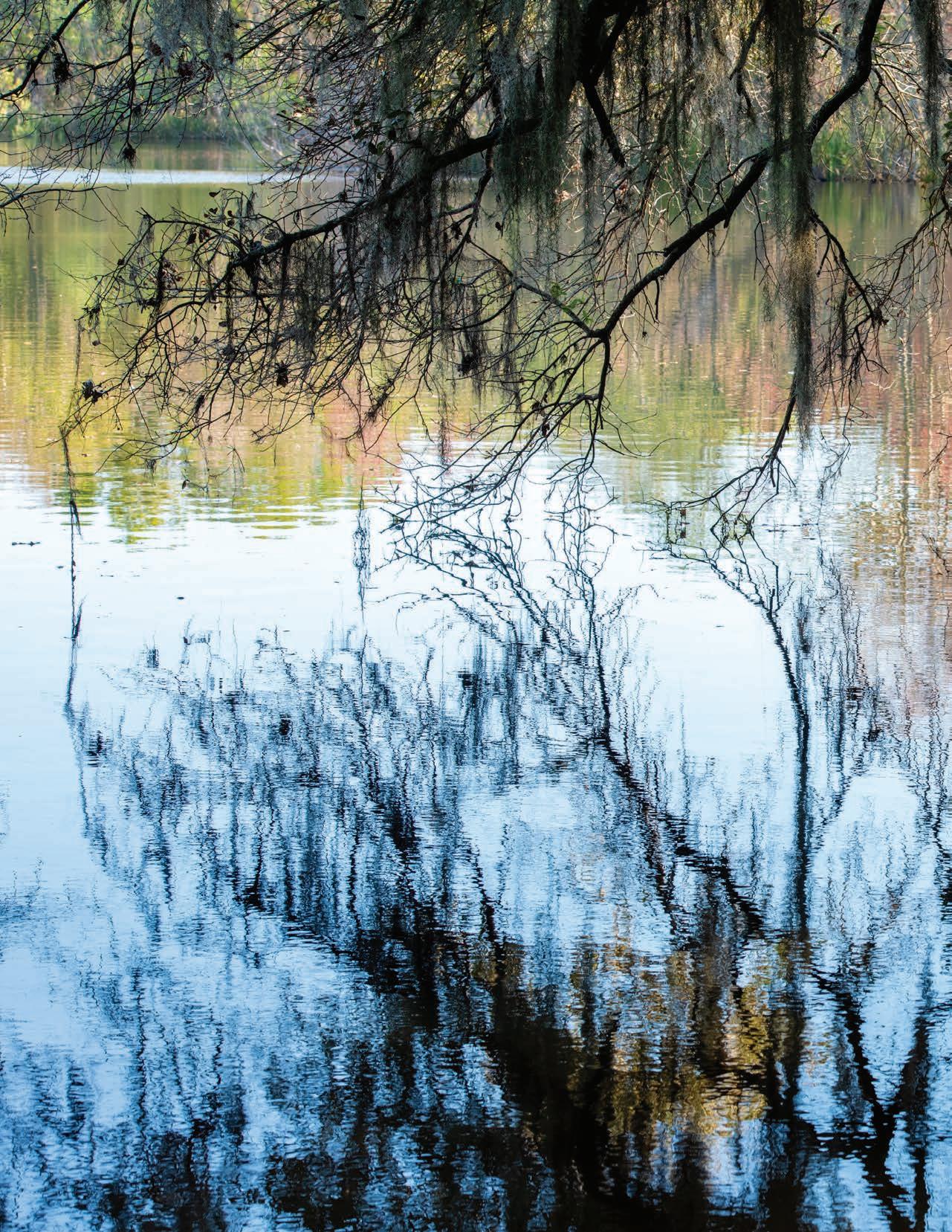
Spring/Summer 2020, Vol. 25, No. 1 26 32 5 20 14 Extracts Research briefs Nursing Now New technologies to better care for all patients The Bias Within True beliefs are not always obvious Bilingual Brains Linguistics team studies the benefits of speaking multiple languages Wild Side Economics Understanding the impacts of wildlife John Jernigan
the cover: Psychology researcher Kate Ratliff seeks to understand how the subconscious can contradict the conscious mind when it comes to biases about such things as race, gender and age.
Florida's Book Store University Press of Florida celebrates 75 years of publishing The Conversation Political Black Girl Magic
About
38 42
Dr. Kent Fuchs
President
Dr. David Norton
Vice President for Research
Board of Trustees
Mori Hosseini, Chair
David L. Brandon
Richard P. Cole
Sylvain Doré
James W. Heavener
Leonard H. Johnson
Daniel T. O’Keefe
Thomas G. Kuntz
Rahul Patel
Trevor J. Pope
Marsha D. Powers
Jason J. Rosenberg
Anita G. Zucker
Explore is published by UF Research. Opinions expressed do not reflect the official views of the university. Use of trade names implies no endorsement by the University of Florida.
© 2020 University of Florida. explore.research.ufl.edu
Editor: Joseph M. Kays joekays@ufl.edu
Art Director: Katherine Kinsley-Momberger
Design and Illustration: Katherine Kinsley-Momberger
Ivan J. Ramos
Writers:
Anna Hoffman
Joseph Kays
Jewel Midelis
Cindy Spence
Photography:
John Jernigan
Jesse Jones
Web Editors:
Jewel Midelis
Karla Arboleda
Copy Editor: Bruce Mastron
Printing:
StorterChilds Printing, Gainesville
Member of the University Research Magazine Association www.urma.org
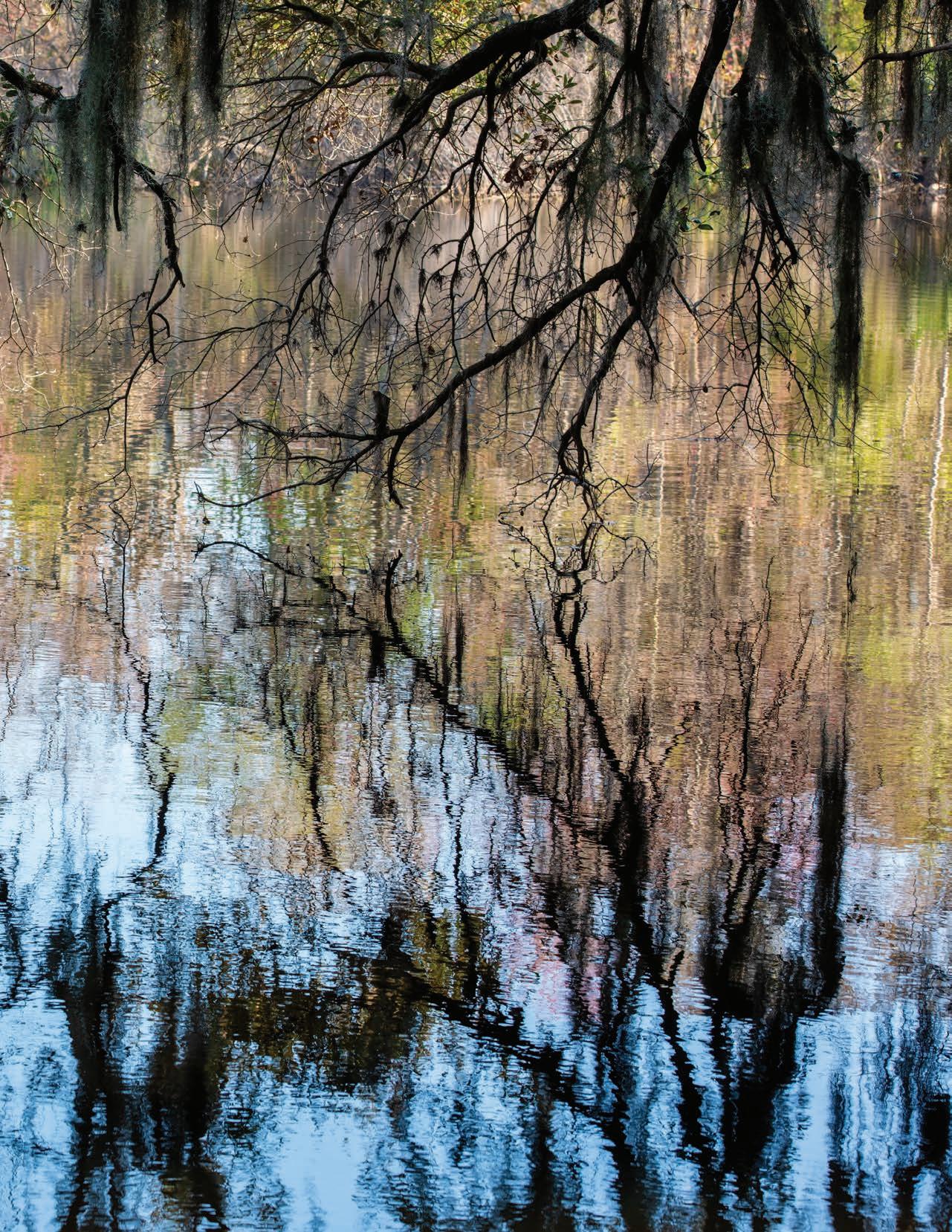
This issue of Explore was ready to be printed in March when the coronavirus pandemic forced the university to shut down all but essential services. As the extent and severity of the pandemic became clear, we initially planned to just post the stories online and not publish a printed version.
But when the deaths of George Floyd, Breonna Taylor and other Black Americans while in police custody resulted in protests and renewed calls for racial equity in the United States, we decided that our cover story about implicit bias was especially timely and needed to be shared as widely as possible.
As you’ll learn in this story, implicit bias differs from the prejudices we recognize and acknowledge and it can be influenced by forces outside our
awareness or control, says psychology Associate Professor Kate Ratliff. As the executive director of Project Implicit, a website that has collected results of over 25 million tests of such biases in 17 years, Ratliff advocates for using scientific tools to quantify implicit biases so that strategies — blind auditions, for instance — can be designed to counter biases.
In June, UF President Kent Fuchs announced that the university was recommitting itself to the “challenging, uncomfortable, transformational work” of addressing racial inequities through 15 actions intended to help “in education, in advancing truth, reconciliation and justice, and in anti-racism, equality and working to eradicate inequities.”
As part of this initiative, Vice President for Research David Norton and Chief Diversity Officer Antonio Farias worked together to establish a $400,000 fund to provide grants to faculty to study topics of race, equity, justice and reconciliation. Over the next year, UF Research expects to fund several dozen such grants.
“UF Research is committed to being a driver of positive change in efforts to address racism and inequity,” Norton said.
The incidents of the past few months have forced all of us to confront our own biases, explicit and implicit, and to work toward “becoming anti-racist,” as former UF history Professor Ibram Kendi says in his bestselling book “How to Be an Antiracist.”
We hope that our story on implicit bias will help readers begin to recognize and address their own biases and build a more equitable university and nation.
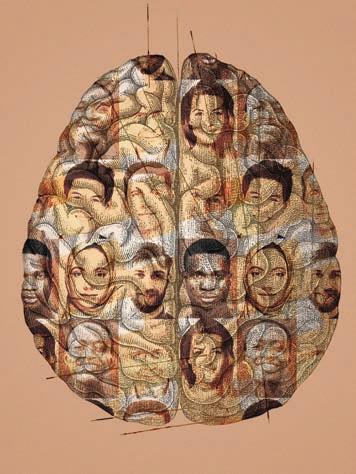 Joseph Kays Editor
Joseph Kays Editor
UF Research Responds to COVID-19
University of Florida researchers have been leaders in the response to COVID-19, from quickly setting up testing at the local level to advising international agencies on how the virus might spread.
UF Health anesthesiologists teamed up with engineering researchers to create a ventilator with hardware store parts. A team of anesthesiologists and wind-engineering experts developed economical face shields and makeshift intubation technology while other researchers devised a way to use 3D printing to quickly produce nasal swabs for testing.
At UF’s Emerging Pathogens Institute, virologists adapted a test developed
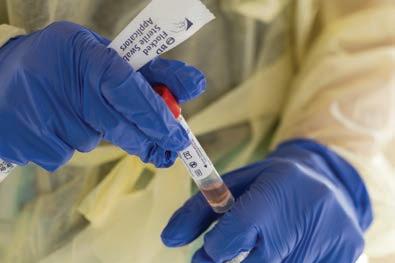
years ago to detect coronaviruses in Florida bats and set up a high-capacity COVID19 lab that was soon processing hundreds of tests a day; biostatisticians who played a key role in developing an ebola vaccine quickly pivoted to COVID-19 and helped public health agencies understand how the disease was spreading; and a biology professor led the design and analysis of the country’s largest trial to compare the effectiveness of masks for health-care workers.
The UF Clinical and Translational Science Institute, or CTSI, and the Office of the Senior Vice President for Health Affairs, set up a $2 million pilot research fund for scientists with transla-
tional projects that could be rapidly mobilized into clinical trials. The initial 19 projects to receive funding include studying existing antiviral medications for effectiveness against COVID-19 and a novel approach to induce rapid healing in critical-care COVID-19 patients.
“A large university like ours has a lot of expertise and a true desire to make a positive impact,” said David Norton, UF’s vice president for research. “It has been a real coming together for the
community. It was, without question, one of the most encouraging parts of the pandemic.”
Learn more about UF’s research response to COVID19 at http://explore.research. ufl.edu/uf-covid-19-researchexpertise.html and be on the lookout for a special issue of Explore on the virus in 2021.
4 Spring/Summer 2020
Louis Brems
Sakurai for Sikivie
Physics professor honored for career focused on elusive atomic particle
AUniversity of Florida physics professor is the recipient of the 2020 J.J. Sakurai Prize for Theoretical Physics from the American Physical Society.

Pierre Sikivie was honored for “his seminal work recognizing the potential visibility of the invisible axion, devising novel methods to detect it, and for theoretical investigations of its cosmological implications,” according to the American Physical Society. The annual award is one of the most prestigious in the field and recognizes outstanding achievement in particle theory.
The axion is a particle theorized to exist because it solves a problem in the Standard Model of particle phys-
ics, the theory that describes the electromagnetic weak and strong interactions among elementary particles. In addition to solving a problem in the Standard Model theory, the axion could be a component of dark matter.
The axion has yet to be detected, and for much of his career, Sikivie has theorized about ways it could be spotted. Some experiments in particle physics utilize his research showing dark matter axions can be detected on earth when they are converted to microwave photons in a cavity that has a strong magnetic field in it. Other experiments look for axions emitted from the sun and converted into X-rays in a magnetic field on earth.
Experiments based on his work can be found in labs across the world, including the Axion Dark Matter Experiment at the University of Washington’s Center for Experimental Nuclear Physics and Astrophysics (CENPA), and at the European Organization for Nuclear Research (CERN) in Switzerland.
“He’s a great partner, always willing to explain details and sit down to work problems out on a practical
African American Studies
Program celebrates 50 years on campus with new home, historical marker
The African American Studies program celebrated its 50th anniversary in February with the unveiling of a new historical marker, commemorative speeches, musical performances and a symposium reflecting on the program’s significance.

The celebration not only honored the program’s past, but looked to its future: African American Studies is in the process of becoming a department within the College of Liberal Arts and Sciences, with a pledge of four tenure-track lines committed to the field. A new space for the program has also recently opened in Turlington Hall.
“This is the time to build bridges and strengthen already existing ties,” said James Essegbey, interim director of the African American Studies program and an associate professor in the Department of Languages, Literatures and Cultures. “I look forward to continuing our collaboration and starting new ones in the coming years with the goal of fostering a fulfilled academic experience for our students.”
Addressing the crowd of more than 100 at a ceremony to unveil the historical marker, Dean David Richardson said that African American Studies reflected the goal of a liberal education: To free the mind.
With the marker and the new space, Richardson said that “African American Studies will take its rightful place in the vision of the university and its students.”
In his remarks, UF President Kent Fuchs called African American Studies “one of the defining elements of our university.”
level,” said David Tanner, also a professor of physics at UF, who collaborates with Sikivie on designing and constructing axion detectors. “He’s just a fountain of ideas, always thinking about new ways to evolve the axion and experiments.”
If it is found, scientists could use the axion to learn more about the history of the galaxy.
Emily Cardinali
The two-day celebration also featured a screening of the film, “The Making of the Institute of Black Culture at UF,” and performances by 1000 Voices of Florida, the Pazeni Sauti UF Africa Choir, Agbedidi and more.
Adrian White
5
E tracts
Freshwater Algal Risks
Officials investigate negative effects of algal bloom on humans
Florida’s freshwater lakes, springs and waterways are increasingly threatened by harmful algal blooms that contaminate the water and endanger the lives of aquatic plants and animals. But do toxic algal blooms pose a threat to human health as well?

With funding from the Florida Department of Health and the help of big data analytics, a team of researchers from the University of Florida and UF Health plans to find out.
“This is the first largescale epidemiological study in Florida to examine the link between freshwater algal blooms and human diseases,” said Yi Guo, an assistant professor in the UF College of Medicine’s Department of Health Outcomes & Biomedical Informatics.
Algal blooms in Florida have proliferated in recent years. The two major culprits include cyanobacteria, the dominant blue-green algae that bloom in Florida’s freshwater lakes and waterways, and Karenia brevis algae, responsible for the recent red tides and major fish kills in the state’s coastal waters. Guo’s study focuses mainly on freshwater contamination by cyanobacteria and its potential effects on human health.
Until now, most of the research on freshwater algal blooms in Florida has focused on their causes, such as overuse of fertilizer, land use and development, and even climate change. But many questions remain about the effects of algal blooms on human health.
“Our research project will
fill important gaps in our understanding of the relationships between harmful freshwater algal blooms in Florida and possible links to liver and neurological diseases in humans,” Guo said.
For example, one of the most prevalent toxins associated with cyanobacteria microcystin attacks the liver.
According to Guo, consumption of seafood and water contaminated with microcystin can lead to liver damage and liver disease. The toxin, which can’t be broken down by the human digestive tract, is quickly transported to the liver, where it accumulates in liver cells, causing inflammation and disrupting cell function. Ingesting large amounts of this toxin over a short period of time can lead to severe liver damage and even death. Ingesting smaller amounts over a long period of time can damage liver cells and lead to chronic inflammation and illness.
“The increasing number and size of toxic algal blooms in Florida has made exposure to microcystins a major concern for human health,” Guo said. “However, few largescale epidemiological studies have been conducted to determine the extent of the risk to humans or the number of people who already may have been affected.”
Another potent toxin associated with cyanobacteria is saxitoxin, also known as paralytic shellfish toxin. Consuming shellfish contaminated with this powerful neurotoxin can rapidly lead to respiratory distress, paralysis and death.
Guo said this study is the first to explore the amount of yet another neurotoxin known as BMAA in Florida freshwater lakes and waterways. Studies in New England and elsewhere suggest that BMAA in algae-contaminated lakes may be an environmental risk factor for Alzheimer’s disease, Parkinson’s disease and ALS. But none of the studies has found a strong cause-andeffect link.
The UF researchers will establish current levels of BMAA in Florida’s freshwater lakes and waterways. They will also examine the role of cyanobacteria in raising freshwater BMAA levels. The study results could even provide a more definitive link between human exposure to this neurotoxin and the development of neurodegenerative diseases.
Guo leads a team that includes health outcomes researchers, epidemiologists, water quality experts and biomedical informaticians from UF’s College of Medicine, School of Forest Resources &
Conservation in the Institute of Food and Agricultural Sciences, and the UF Emerging Pathogens Institute. The team plans to link limited patient data from electronic health records in the OneFlorida Data Trust with water data from Florida LAKEWATCH and other state agencies to identify hotspots of human diseases that are potentially associated with algae blooms and cyanobacterial toxins.
Guo said that mapping the hotspots in Florida showing unusually high rates of human diseases that are associated with harmful algal blooms could help public health agencies and policymakers make better use of their resources and efforts.
“Our study will provide the evidence needed to develop public health interventions that target harmful algal blooms in the most impacted regions of the state,” he said.
Diana Tonnessen
UF/IFAS researchers test the algae-infested waters of a lake in Hillsborough County.
Edward Phlips
6 Spring/Summer 2020 E tracts
Reef Urchins
Restoring populations vital to Keys' coral reefs
Researchers at the University of Florida, in partnership with The Florida Aquarium, have discovered a novel method of culturing long-spined sea urchins, a species that is ecologically vital to the Florida Keys’ vulnerable coral reefs.

Scientists from the UF Institute of Food and Agricultural Sciences (UF/IFAS) and Aquarium biologists will breed these urchins for use in the “Mission: Iconic Reefs” project, a multi-partner coral reef restoration initiative from the National Oceanic and Atmospheric Administration (NOAA).
Aaron Pilnick, a Ph.D. student in the UF/IFAS College of Agricultural and Life
Sciences’ School of Natural Resources and Environment, and his adviser Joshua Patterson, assistant professor of restoration aquaculture in the UF/IFAS School of Forest Resources and Conservation, say that restoring diminished populations of the urchin, scientifically known as Diadema antillarum, is crucial to reviving coral reefs in the Keys. In the early 1980s, approximately 97% of the Diadema found in the Caribbean died due to a mysterious disease.
“The consequences of this die-off event were massive,” said Pilnick, who studies interdisciplinary ecology.
“As one of the primary reefgrazing herbivores, Diadema are responsible for consuming
algae; when they disappeared, there was a coinciding decline in coral cover as algae began to grow unchecked.”
Unfortunately, Diadema populations have never recovered. However, Pilnick and Patterson, based out of the Florida Aquarium’s Center for Conservation in Apollo Beach, plan to change that. Their research, funded by the Aquarium and UF, led to the largest captive Diadema culture in 2019.
“The marriage of the University of Florida’s research prowess and The Florida Aquarium’s aquarist expertise and infrastructure has created the necessary environment to ‘crack the code’ on Diadema aquaculture,” said Amber
Whittle, director of conservation at The Florida Aquarium. “This partnership is vital to herbivore restoration on the Florida Reef Tract.”
Diadema are notoriously difficult to work with t heir larvae are physically fragile, very sensitive to pollution in the water, and have a long developmental period of 40 or more days. Pilnick designed and built a novel aquaculture system that could cater to the urchin’s every need, including diet, water quality and habitat preferences.
“We start the culture process by spawning and collecting microscopic reproductive cells from adult Diadema and closely follow and monitor their development through to adulthood,” Pilnick said. “After working on this project for over a year we finally had a successful run producing 100 juvenile urchins this June, which was incredibly exciting and a huge step forward for our research program.”
Pilnick knows how important coral ecosystems are to Florida’s economy, but also has a more personal passion behind his research.
“I grew up fishing and diving in the Florida Keys and even taught scuba diving in Key Largo,” Pilnick said. “Now I feel compelled to try and fix some of the problems we are dealing with there so that future generations can enjoy what this truly special place is all about.”
Kim Scotto-Kelley
7
Better Blueberries
Focusing on taste, color helps to develop new varieties
plant breeder and a food scientist, both with the University of Florida, are part of a $12.8 million, multistate research grant to broaden the nation’s blueberry breeding capabilities.
For the project, Patricio Muñoz, an assistant professor of horticultural sciences, and Charlie Sims, a professor of food science and human nutrition, will provide feedback on the genetic characteristics that prove best for various blueberry cultivars. Scientists seek improved taste, aroma and yield, among other traits.
Muñoz will continue his experimental blueberry growth trials at the UF/IFAS Plant Science Research and Education Unit in Citra and at a commercial farm near Waldo. Sims will conduct
taste test panels from his lab on the UF campus.
UF blueberry breeding goes back to the 1940s. Among the recent blueberry cultivars developed by UF are Arcadia™, Optimus and Colossus.
With about 5,000 acres, the Florida blueberry industry is worth an estimated $82 million, according to the most recent statistics from the Florida Department of Agriculture and Consumer Services. So, it’s important that farmers grow the best berries possible.
“Blueberries have been recognized for their health benefits, which in part have driven a large increase in consumption,” said Muñoz, the blueberry breeder. “But global competition is getting more
intense, and it is detrimental to our producers.”
Sims will provide feedback about which blueberry varieties consumers like best and hopefully some characteristics associated with their preferences.
“This will provide important information to the breeders and geneticists in developing blueberry varieties that consumers like better,” Sims said.
As breeders have developed blueberry cultivars, they have focused on factors such as machine harvestability, fruit quality and yield that can help growers stay profitable. However, with more intense competition, scientists need to develop fruit with exceptional flavor characteristics to help producers, Muñoz said.
Putting with Pollinators
“In this project, we will focus on this goal by exploring the genes that control fruit flavor,” Muñoz said. “Fruit with exceptional flavor will improve fruit consumption satisfaction and hopefully increase purchasing frequency. All these will be beneficial to all the stakeholders involved in blueberries, from the nurseries producing the plants, to the producers of fruits, supermarkets selling the fruit and consumers of blueberries.”
In his program, Muñoz uses numerous methods to develop new blueberry varieties. In all methods, scientists are selecting for the best genetic traits to help ward off diseases, pests and heat, among other stress factors.
“The simplest method is
UF/IFAS study shows benefits to having wildflowers on golf courses
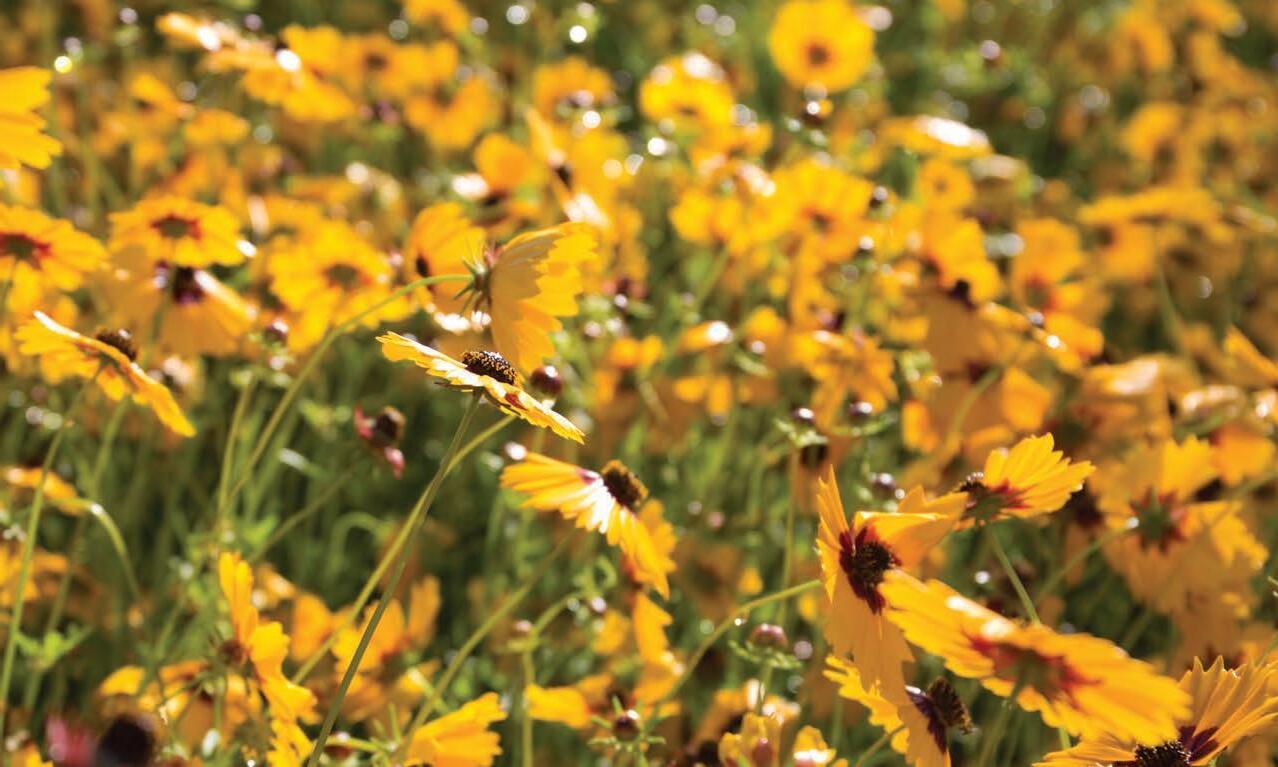
Astudy by UF’s Institute of Food and Agricultural Sciences shows that planting wildflowers on golf courses not only benefits pollinating insects but also saves time and resources.
“Putting wildflowers on golf courses to help pollinators isn’t a new idea. What is new is demonstrating the direct benefits of flowering plants to golf course managers, in the form of pest management,” said Adam Dale, assistant professor of entomology and the study’s lead author.
Wildflowers attract insects that attack common golf course pests, plus wildflowers don’t need the fertilizer, water and mowing that the rest of the course does, Dale said.
According to the study, urban green spaces which include city parks, golf courses and urban gardens c an play an important role in conserving beneficial insects. In fact, a recent study in Australia found that golf courses supported more insect biodiversity than other types of urban green space. Golf courses are among the largest and most common types of urban green space. There are about 16,000 in the United States, and more than 1,200 of those are in Florida.
Though they offer a lot of vegetated space, past studies have shown that an estimated 40 to 70% of golf course acreage isn’t used by golfers because they tend to play the same portions of a
course. Plus, these out-of-play areas are often composed of only turfgrass, which is less attractive to pollinators and other beneficial insects compared to flowering plants. In addition, these turf areas have to be mowed, watered, and fertilized, which is a big time and money commitment.
Fortunately, with some simple modification, golf courses have great potential to support pollinators and other beneficial insects, Dale said. If you remove some of the out-of-play turf and replace it with native wildflowers, out-of-play areas no longer require as much maintenance, and they can provide food and living space for a multitude of beneficial insects.
“It’s a win-win for insects and golf course superintendents. Many golfers see them as a plus, too,” Dale said.
In their experiment, Dale and his team established wildflower plots on three golf courses in north central Florida. They then compared the number and diversity of pollinators and other flying beneficial insects in flowering plots with that of control plots containing the course’s out-of-play turf. Each plot was slightly bigger than a standard basketball court.
The researchers monitored beneficial insects in each plot over a six-month period using various trapping methods. One of these methods included nesting structures to encourage pol-
Tyler Jones
A
8 Spring/Summer 2020
E tracts
to cross two blueberry plants by applying the pollen from one into the flower female of the other, collect the seeds out of that cross, then grow the seedlings and finally select the one plant that combines the traits of the two original parents,” he said.
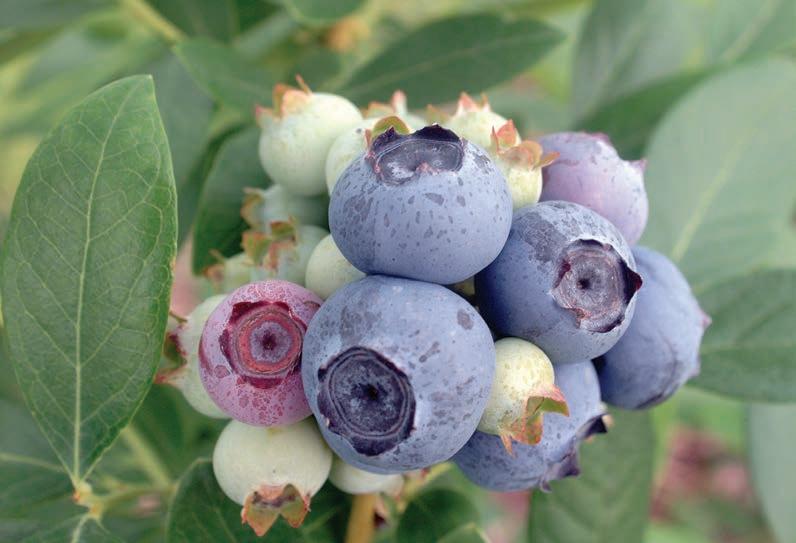
Muñoz and Sims join researchers at North Carolina State University, who were awarded a four-year, $6.4 million U.S. Department of Agriculture grant. Those funds are getting matched dollar for dollar f rom various sources to study genetics in the breeding of cranberries and blueberries.
 Brad Buck
Brad Buck
linators and other beneficial insects to live and reproduce in the area.
As they predicted, wildflower plots increased the number of pollinators and beneficial insects compared with the turf areas. Also, the number of wildflower species in a plot was important – the more the better for native bees and predatory insects. The nesting structures also attracted many insects that prey on plant pests, suggesting that these structures alone have value on golf courses.
These insect predators and parasites are called “natural enemies” because they naturally attack and feed on other insects.
“It was amazing to watch predatory wasps bringing fall armyworm larva back to the nesting area and stuffing them into the nesting cavities. It’s a great example of what we call conservation biological control, which is attracting natural enemies to control pests,” Dale said. Fall armyworm is a major caterpillar pest on golf courses.
The researchers also wanted to see if using wildflowers to attract these natural enemies translated into increased biological control on the golf course. To measure this, they set out cups containing fall armyworms on the golf courses next to the wildflower and turf plots. These cups trapped the cater-
pillars but allowed flying insect natural enemies to access the caterpillars.
“On average, we found that fall armyworms adjacent to wildflower plots disappeared nearly 50% more frequently, compared to those in our turf control areas. This shows that wildflower habitat, by attracting natural enemies, can help control insect pests on golf courses,” Dale said.
Golf course superintendents who participated in the experiment, as well as others around the state, are interested in creating these types of habitats to save resources and benefit the environment, Dale said, adding that the experiment would not have been possible without their support.
“Wildflowers and other conservation areas on golf courses are also an opportunity to educate the public about the ecological value of golf courses as well as the importance of insect biodiversity, which recent research has shown to be declining around the globe,” Dale said.
The study appears in the journal Urban Ecosystems.
Samantha Murray
9
Caribbean Cannibalism
New evidence supports Columbus’ 15th-century claims
hristopher Columbus’ accounts of the Caribbean include harrowing descriptions of fierce raiders who abducted women and cannibalized men stories long dismissed as myths.
But a study suggests Columbus may have been telling the truth.
Using the equivalent of facial recognition technology, researchers analyzed the skulls of early Caribbean inhabitants, uncovering re-
lationships between people groups and upending longstanding hypotheses about how the islands were first colonized.
One surprising finding was that the Caribs, marauders from South America and rumored cannibals, invaded Jamaica, Hispaniola and the Bahamas, overturning half a century of assumptions that they never made it farther north than Guadeloupe.
“I’ve spent years trying
to prove Columbus wrong when he was right: There were Caribs in the northern Caribbean when he arrived,” said William Keegan, Florida Museum of Natural History curator of Caribbean archaeology. “We’re going to have to reinterpret everything we thought we knew.”
Caribs hailed from the Northwest Amazon, and archaeologists long believed they never expanded north of the Lesser Antilles.

Columbus had recounted how peaceful Arawaks in modern-day Bahamas were terrorized by pillagers he mistakenly described as “Caniba,” the Asiatic subjects of the Grand Khan. His Spanish successors corrected the name to “Caribe” a few decades later, but the similarsounding names led most archaeologists to chalk up the references to a mix-up: How could Caribs have been in the Bahamas when their closest outpost was nearly 1,000 miles to the south?
But skulls reveal the Carib presence in the Caribbean was far more prominent than previously thought, giving credence to Columbus’ claims.
Previous studies relied on artifacts such as tools and pottery to trace the geographical origin and movement of people through the Caribbean over time. Adding a biological component brings the region’s history into sharper focus, said Ann Ross, a professor of biological sciences at North Carolina State University and the study’s lead author.
Ross used 3D facial “landmarks,” such as the size of an eye socket or length of a nose, to analyze more than
100 skulls dating from about A.D. 800 to 1542. These landmarks can act as a genetic proxy for determining how closely people are related to one another.
The analysis not only revealed three distinct Caribbean people groups but also their migration routes, which was “really stunning,” Ross said.
Looking at ancient faces shows the Caribbean’s earliest settlers came from the Yucatan, then moved into Cuba and the Northern Antilles, which supports a previous hypothesis based on similarities in stone tools. Arawak speakers from coastal Colombia and Venezuela migrated to Puerto Rico between 800 and 200 B.C., a journey also documented in pottery.
The earliest inhabitants of the Bahamas and Hispaniola, however, were not from Cuba as commonly thought, but the Northwest Amazon the Caribs. Around A.D. 800, they pushed north into Hispaniola and Jamaica and then the Bahamas, where they were well established by the time Columbus arrived.
“I had been stumped for years because I didn’t have this Bahamian component,” Ross said. “Those remains were so key. This will change the perspective on the people and peopling of the Caribbean.”
For Keegan, the discovery lays to rest a puzzle that pestered him for years: why a type of pottery known as Meillacoid appears in Hispaniola by A.D. 800, Jamaica around 900 and the Bahamas around 1000.
“Why was this pottery so different from everything else we see? That had bothered me,” he said. “It makes
C 10 Spring/Summer 2020 E tracts
sense that Meillacoid pottery is associated with the Carib expansion.”
The sudden appearance of Meillacoid pottery also corresponds with a general reshuffling of people in the Caribbean after a 1,000year period of tranquility, further evidence that “Carib invaders were on the move,” Keegan said.
So, was there any substance to the tales of cannibalism?
Possibly, Keegan said.
Arawaks and Caribs were enemies, but they often lived side by side with occasional intermarriage before blood feuds erupted, he said.
“It’s almost a Hatfields and McCoys kind of situation,” Keegan said. “Maybe there was some cannibalism involved. If you need to frighten your enemies, that’s a really good way to do it.”
Whether or not it was accurate, the European perception that Caribs were cannibals had a tremendous impact on the region’s history, he said. The Spanish monarchy initially insisted that indigenous people be paid for work and treated with respect, but reversed its position after receiving reports that they refused to convert to Christianity and ate human flesh.
“The crown said, ‘Well, if they’re going to behave that way, they can be enslaved,’” Keegan said. “All of a sudden, every native person in the entire Caribbean became a Carib as far as the colonists were concerned.”
The study was published in Scientific Reports
Natalie van Hoose
Protecting Peppers
Researchers trying to make peppers disease resistant
Peppers are popular. Consumers eat all kinds, including jalapenos, habaneros, chilis and more. Because people eat so much of the fruit, they’re worth hundreds of millions of dollars a year to the Florida and national economies.
In fact, in 2018 bell and chili peppers alone were a $181 million-a-year industry in Florida and a $628 million-a-year industry nationwide, according to the U.S. Department of Agriculture.

But, like all crops, peppers face diseases that threaten to reduce their production. So, a University of Florida scientist is leading a multistate effort to lessen the risk of diseases eating away at pepper harvests. With new data, scientists plan to help farmers increase their pepper production.
Pamela Roberts, a UF/ IFAS plant pathology professor, has been awarded a four-year, $3 million grant from the National Institute of Food and Agriculture, an arm of the USDA, to lead research into ways to reduce bacterial diseases in peppers. Scientists from UF, North Carolina State University, the University of Georgia, Ohio State University, Auburn University and a USDA lab in South Carolina will participate in the pepper disease research.
“Bacterial spot is one of the most damaging and difficult diseases to manage on peppers,” said Roberts, a faculty member at the Southwest Florida Research and Education Center in Immokalee. “Yield losses in severely affected crops can reach 100 percent.”
For example, it causes
severe defoliation, which in turn produces a less-healthy plant that yields fewer fruits of a less-marketable quality.
With the grant, scientists will zero in on a pathogen called Xanthomonas perforans, one of the three species of Xanthomonas that cause bacterial spot in many crops, including peppers.
In addition to Xanthomonas, scientists plan to study how to minimize the impacts of less common, but emerging, pepper pathogens such as Clavibacter michiganensis. Researchers also want to make sure they build disease resistance into pepper plants, Roberts said.
Researchers also plan to study ways to promote sustainable production. Here, “sustainable production” means making a profit by reducing inputs in particular, disease-management costs while maximizing production.
As they slash the potential
for pepper diseases, Roberts’ research team will try to develop ways to save money for farmers.
Researchers will look at multiple ways to cut growers’ costs. These include reducing spray frequency, increasing fuel efficiency of equipment and reducing labor costs.
“Farmers’ budgets are designed to estimate the cost of conventional production practices,” Roberts said.
“The treatments we develop are expected to affect how often growers spray chemicals on their crops. Healthier plants may also require fewer nutrients. The treatment effects and the net benefits are likely to vary by geographic region as weather, climate and prices vary.”
Brad Buck
11
E tracts
Diabetes Link
Immunity-attacking virus may trigger disease

Aprolonged infection by a common virus might sometimes trigger the immune system attack on the pancreas that ultimately leads to Type 1 diabetes.
The finding from The Environmental Determinants of Diabetes in the Young, or TEDDY, study was recently published in the journal Nature Medicine by a team of scientists that includes a UF Health researcher.
By examining the stool samples of more than 8,000 children from the United States and Europe for the remnants of viral infections, researchers found an association between an infection of coxsackievirus for 30 days or longer and the development of the autoimmunity that can lead to Type 1 diabetes.
Such an autoimmunity means the body attacks the insulin-producing beta cells of the pancreas, which causes Type 1 diabetes. Insulin is a hormone that regulates blood sugar. Without it, the body cannot maintain normal blood sugar levels, which can lead to serious medical complications.
The study strengthens the case that the virus, long suspected as a trigger for that autoimmune attack, might be one cause of Type 1 diabetes, said study co-author Dr. Desmond Schatz, pediatric medical director of the UF Diabetes Institute.
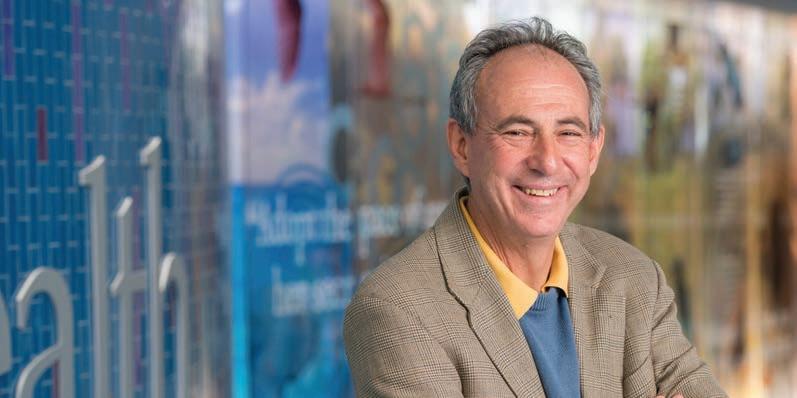
leads to no symptoms at all in children, although in others it can cause mild flu-like symptoms. In most cases, the viral infection quickly disappears without treatment. But in others, it can lead to more serious illnesses, including meningitis.
“Down the road, if we
“Only a small subset of children who get enterovirus will go on to develop beta cell autoimmunity,” she said. “Those whose infection lasts a month or more will be at higher risk.”
Researchers also found that infection by another type
“The lamentation of where we are in research is that we don’t fully understand the mechanism leading to Type 1 diabetes,” Schatz said. “We know there’s not one cause of the disease. There are probably several. This brings us a step closer to possibly understanding one of those causes.”
The coxsackievirus, classified as an enterovirus, often
were to eradicate this virus, such as with a vaccine or its early identification for those at risk, we might be able to prevent diabetes in some cases,” Schatz said.
Kendra Vehik, the study’s lead author and a professor at the University of South Florida, said the study’s findings are important because enteroviruses are so common.
of virus, adenovirus C, which can cause respiratory infections, was associated with a lower risk of developing the beta cell autoimmunity.
“Taking it all together, our study provides a new understanding of the roles different viruses can play in the development of beta cell autoimmunity linked to Type 1 diabetes and suggests new avenues for intervention that could potentially prevent (the disease) in some children,” said study co-author Richard Lloyd, a professor of molecular virology and microbiology at the Baylor College of Medicine.
Bill Levesque
“Only a small subset of children who get enterovirus will go on to develop beta cell autoimmunity. Those whose infection lasts a month or more will be at higher risk.”
Kendra Vehik
“The lamentation of where we are in research is that we don’t fully understand the mechanism leading to Type 1 diabetes … This brings us a step closer to possibly understanding one of those causes.”
Desmond Schatz
12 Spring/Summer 2020
Period Prognosis
Age of first menstruation could foreshadow heart problems
t what age did you begin menstruating” might seem like an irrelevant question for a cardiologist to ask a female patient, but Dr. Carl J. Pepine hopes it will one day become as routine as asking someone if they smoke or have high blood pressure. The answer could provide insight into a woman’s risk of heart disease.
Women who experienced their first menstruation at an early or late age have an elevated risk of developing “major adverse cardiac events,” according to recent research co-authored by Pepine with collaborators at Cedars-Sinai Medical Center in Los Angeles. These include heart attack, stroke, heart failure and death.
Their study found that women whose first menstruation, called menarche, was at age 10 or younger had a four-fold higher risk of adverse cardiac events. That is compared with those whose menarche occurred at the U.S. average a ge 12. For women whose menarche came at age 15 or later, the risk was elevated two-and-ahalf times.
In fact, the numbers suggest the risk of cardiac problems for these women might be higher than for other typical risk factors such as high blood pressure or cholesterol, said Pepine.
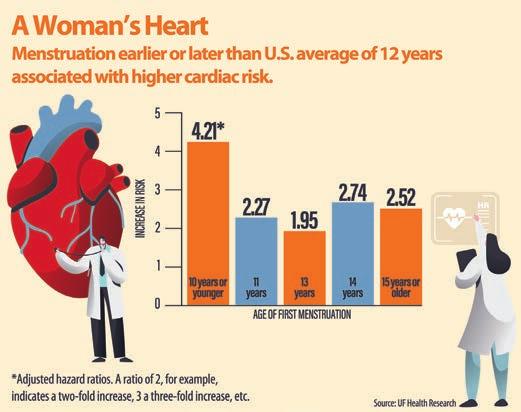
Women whose menarche occurred at ages 11, 13 or 14 also faced at least a twofold increased risk of heart problems, according to the research, published in the Journal of the American Heart Association.
“This is a real hazard,”
said Pepine, a professor in the UF College of Medicine’s division of cardiovascular medicine. “This will prompt attention to a novel risk factor that most physicians are not aware of. We hope it will rekindle interest in collecting this information when a woman visits her cardiologist.”
Why menarche has a role in cardiovascular disease risk, Pepine said, still remains unclear, although one hypothesis is focused on genetic variables.
Critically, the study noted the correlation regardless of a woman’s lifetime exposure to estrogen. Estrogen had long been viewed as being protective of the heart. Research in the last decade or so has cast some doubt on that idea.
Pepine said it is critical for cardiologists to treat both early and late menarche as an independent risk factor for heart disease and to ask women about age of menarche.
“Clinicians don’t generally pay attention to these historical facts in women,” Pepine said.
Cardiovascular disease is the leading cause of death in women with 400,000 deaths annually in the United States. That’s 1-in-3 deaths. Yet despite increased clinical awareness and advances in research, the study said, “a gap still remains in understanding and effectively recognizing sexspecific risks of preventable” cardiovascular disease.
The research involved 648 women enrolled in the National Institutes of Healthfunded Women’s Ischemia Syndrome Evaluation, or WISE, study, a multicenter collaboration begun in 1997 to examine gender differences in heart disease. Participants, who were tracked for about six years, had symptoms of heart disease serious enough to require a coronary angiography, a test to determine if blood flow to the heart is restricted. Their median age was 57 years.
“I believe that the findings here are going to help shift people away from this estrogen hypothesis and move toward other things,” Pepine said.
While previous research has noted a connection between age of first menstruation and risk of heart disease, Pepine said this might be the first to incorporate lifetime estrogen exposure levels and is more comprehensive than prior reports. Menarche is marked by rising estrogen levels.
If someone knows their age of first menstruation puts them at higher risk of heart disease, then they might, in consultation with their doctor, address the issue in the same way as a patient with diabetes or high blood pressure.
“Women will ask if they need to be monitored a little more closely,” Pepine said. “Should they perhaps have some other risk factor modifications? As a physician, you’d be much less likely to disregard somebody’s borderline blood pressure reading if you know their menarche was at age 10.”
Bill Levesque
“This is a real hazard. This will prompt attention to a novel risk factor that most physicians are not aware of.”
“A 13
Carl J. Pepine

BLACK WHITE BAD GOOD YOUNG OLD
The Bias Within
The couple was baffled. Like millions of other people, they had logged on to the website of Project Implicit and taken a test to measure their implicit biases, or biases that may be hidden, even from ourselves.
The result was so counter to their lived experience that they used an email link at the end of the page to ask a question.
Christine Vitiello, a doctoral researcher in the University of Florida’s psychology department, was taking her turn responding to such emails that day.
“They did not believe the result,” Vitiello recalls. “They said, ‘There’s no way I am biased in this way.’”
The interracial couple’s actions marrying outside their race and having children were a conscious demonstration of egalitarian beliefs. Explicit beliefs. The test result, however, showed an implicit association of white faces with positive words and black faces with negative words, indicating an implicit bias.
Vitiello says the researchers in the Attitudes and Social Cognition Laboratory respond to six or seven such emails a day, often from people who are similarly perplexed.
“Sometimes people will tell their life story to explain how the test result cannot be real,” says Vitiello, who is collaborating with Elsa Jiang on research about implicit bias.
Test-takers, like the interracial couple, usually accept the results after researchers explain that a test result is not a matter of consciously held beliefs. Jiang and Vitiello’s mentor, UF psychology Associate Professor Kate Ratliff, says that implicit bias is often difficult for people to comprehend, sometimes so difficult that test-takers question the validity of the test. However, recent research shows that test-takers report the experience as more positive than average.
“A common response is defensiveness. The other response we see a lot is guilt, when the feedback differs from how people see themselves,” said Ratliff, the executive director of Project Implicit and director of the Attitudes and Social Cognition Lab.
But after 17 years and 25 million tests, Ratliff says Project Implicit has stood the test of time.
15
True beliefs are not always obvious
B y Cindy SpenCe
Testing Bias
Anyone can take a test or all 14 by logging on to the Project Implicit website. There are 14 tests that measure implicit bias in gender, age, religion, weight, sexuality and other areas. A Hispanic implicit association test and a transgender test are in the works. At international sites, people can take the test in their first language.
After logging on to the site, test-takers answer questions about their attitudes and demographics. When the test starts, participants match good and bad words with images, such as images of young and old people for the age Implicit Association Test. The test keeps track of reaction time as test-takers match old and young faces with positive and negative words. A result for that test is something like this: “In the IAT you just completed your response suggested a moderate automatic preference for young people over old people.” A bar graph follows showing where a test-taker’s result fits among all results for that test. It turns out that 30% of the tested population has a strong automatic preference for young people over old people. Only 1% of the tested population has a strong automatic preference for old people compared to young people.
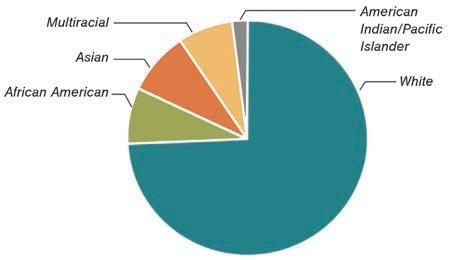
The test measures implicit bias, not explicit prejudice. Ratliff says people are aware of their explicit prejudices and the
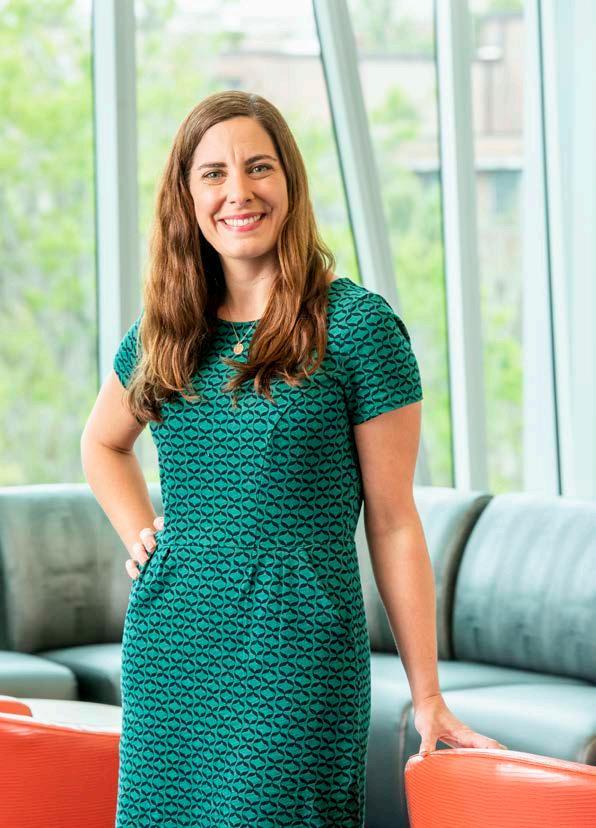

16 Spring/Summer 2020
Project Implicit Participants by Race
“These are associations we have in our minds regardless of whether we want or believe them. These are the kinds of biases that are less controllable.”
CULTURE Influences of Implicit Bias FAMILY/ FRIENDS PERSONAL BELIEFS MEDIA 30% 30% 17% 15% 4% 2% 1% Automatic preference Strong Moderate Slight Little to no preference Slight Moderate Strong Young vs. Old People Old vs. Young People
— Kate Ratliff
An example of web respondents for the Implicit Bias test showing automatic preference for young vs. old people
John Jernigan
stereotypes they embrace. Implicit bias, she says, can be influenced by forces outside our awareness and control.
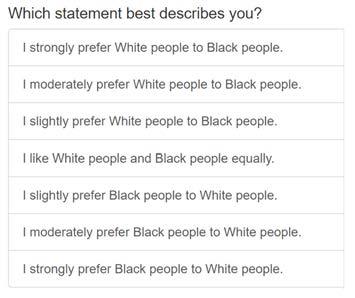


“These are associations we have in our minds regardless of whether we want or believe them,” Ratliff says. “These are the kinds of biases that are less controllable. We can’t introspect on them. We have to use scientific tools, we have to use evidence of actual behavior, observable things, to uncover and quantify these more implicit biases.”
For many tests, group membership is a good predictor of an implicit bias, such as members of an ethnic group having a strong positive preference for their own group. But some tests show that group membership is not a good predictor, such as the gender-career implicit association test.
In that test, about 75% of participants have an easier time associating women with family and men with career than the reverse. Interestingly, Ratliff says, women show these effects just as strongly as men do. Even more interesting, most partici pants say they equally associate men with family and women with careers, the opposite of what the test shows.

That’s the important takeaway, Ratliff says.
“What people say they have in their minds doesn’t always match up particularly well with what we can see from other kinds of observable behaviors that don’t rely on people’s selfreports,” Ratliff says. “Our implicit biases often contradict our stated beliefs.”

17
17
Implicit Bias
Project
Explicit Bias
Implicit
+
Implicit bias can be influenced by forces outside our awareness and control.
–
Data Mining
With more than 25 million tests completed since 2003, Project Implicit’s huge dataset is ripe for mining for all kinds of research, and several of Ratliff’s doctoral students are doing just that.

Jiang and Vitiello are collaborating on a study to determine whether states with a high gender-career bias t hat is, a higher association of males with career and females with family have a higher suicide rate than states with a lower bias.
So far, Jiang says, they have found that states that exhibit the higher gender-career bias do have a higher suicide rate for females. But, surprisingly, they found that those states have a lower suicide rate for males than states with lower gender-career biases. Jiang and Vitiello say more study will be needed to determine whether the higher gender-career bias has a protective effect for males, while it makes women more vulnerable.
Jiang and Vitiello say these biases often reflect culture.
“Children from very early ages often have this association that mommies are at home with children and daddies go to work, even if they’re not in a family that endorses that,” Vitiello says. “It’s something we’ve been trying to unravel. How much of implicit bias is from the culture?”


Samantha Douglas also is using the gender-career test results and says trying to tease apart a stereotype is less straightforward than analyzing a bias toward a group identity, such as an
ethnicity. Women consistently show a stronger association of women with family and men with career than men do, even though they don’t acknowledge it.
“In explicit questions, many women say they don’t have gender-career bias, but they do often show it implicitly on the IAT,” says Douglas, who is working with psychology Assistant Professor Colin Smith, the director of education for Project Implicit. “People might expect men to show a stronger association of women with family and men with career than women do. But actually, women show a slightly stronger implicit association of women with family and men with career.”

Sorting through the “why” behind the test results is turning out to be tough to investigate. Douglas says she has used a gender roles belief measure and looked at hostile and benevolent sexism in futile attempts to explain the phenomenon. She has also compared test results against an assortment of other demographic data, such as whether someone is a parent, or married, or employed.
“That doesn’t seem to explain the effect, either,” Douglas says. “It’s really just been a big mystery.
“With a stereotype, it’s really hard to pull apart all the relationships,” Douglas says.
Influencing Behavior
Ratliff says implicit bias is an example of how much of our mental life occurs outside our active awareness. So far, she says,
18 Spring/Summer 2020
Mo 18 Spring/Summer Children show a stronger association of mommies at home Women show a stronger association of women with family The
Children show a stronger association of daddies at work Women show a stronger association of men with career Overall, Men show slightly less implicit gender-career bias
Gender Gap — Implicit Bias for Women with Family and Men with Career
there are not many scientifically supported strategies for changing implicit biases, but we may be able to learn how to keep implicit biases from influencing our behavior.
“These things we have in our mind that we’re not aware of influence what it is that we actually do,” Ratliff says.
Egalitarian ideas and rules and regulations in hiring decisions, medical treatment, the criminal justice system, the workplace, the media, housing c an be thwarted by implicit biases.
“We have the biases,” Ratliff says. “So how do we stop them from leading us to behaviors and judgments and decisions that we don’t want?”
Strategies like blind auditions can keep bias from entering into a decision. In a blind audition, musicians perform a musical piece behind a curtain, keeping their gender, age, ethnicity, race and other identifying factors hidden. The decision to hire a musician can only be made based on one factor, the musical performance.
“That doesn’t change the bias, but it could change the outcome,” Ratliff says.
Some biases are a “chicken and the egg
problem,” Ratliff says. In India, one province passed a rule that half the council members had to be women, and women went from holding none of the seats to holding half. That had an effect on people’s attitudes toward women.

“We have these biases that prevent women and people of color from getting equal power, but the fact that they don’t have equal power perpetuates the bias,” Ratliff says. “Here, changing the power structure influenced people’s attitudes.
“If we really want these deeply ingrained kinds of associations and biases to change, then our society has to change, because that’s where we’re getting them,” Ratliff says.
Kate Ratliff Associate Professor of Psychology ratliff@ufl.edu
Related website: https://implicit.harvard.edu/implicit/
John Jernigan
19
Christine Vitiello, Samantha Douglas, Kate Ratliff and Elsa Jiang

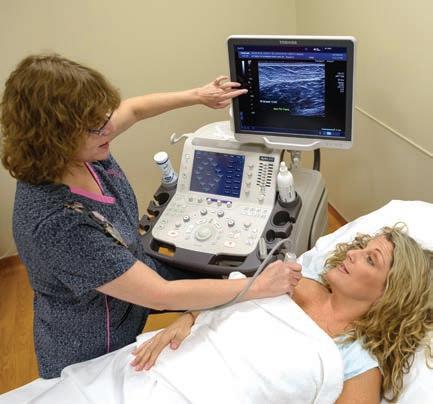


New technologies to better care for all patients
B y A nnA HoffmAn
When Robert Lucero’s great-grandmother fell at home and fractured her hip, it set off a rapid decline in health that left her dead within days.
That experience ignited a passion in Lucero, a UF College of Nursing associate professor, to ensure that other families do not have to suffer the same experience, especially while their loved ones are hospitalized.
Falls are the most common type of hospital-acquired illness, also known as iatrogenic conditions. In the United States, between 700,000 and 1 million falls occur in hospitals annually, resulting in an estimated $50 billion in medical costs.
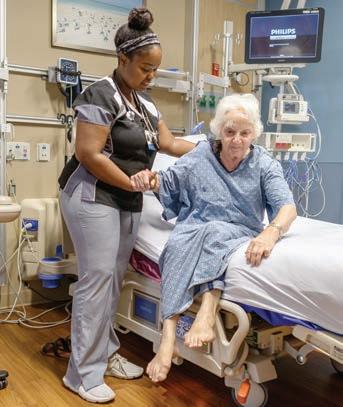
Lucero has dedicated his career to identifying factors that contribute to hospital-acquired falls and figuring out how to reduce or eliminate them.
“As nurses, it is our responsibility to be the surveillance system for patients to maintain their safety when they are hospitalized,” Lucero says. “People like my great-grandmother are vulnerable to the environment they are in when they are hospitalized. The responsibility of the health care provider is to ensure the patients’ safety, because consequences can be emotionally and physically debilitating, as well as even life-threatening.”
Lucero and College of Nursing Assistant Professor Ragnhildur I. Bjarnadottir believe answers to preventing hospital-acquired falls can be found in nurses’ progress notes, unstructured data within electronic health records, or EHRs. The notes are not commonly examined but the researchers believe they can be analyzed using text-mining and data science to reveal new fall risk factors.
Lucero and his colleagues started their research by focusing on structured data within patients’ EHRs l ike their blood chemistry and the medications they were taking. They compared the EHRs of adult patients who experienced a fall during hospitalization to those who did not and identified several new factors that influence the risk of falling,
21
Photography by Jesse Jones
including hemoglobin level, severity of illness, the number and types of drugs taken and the need for physical therapy, as well as the nurse skill mix and staffing. Based on these results, his team developed an educational infographic to guide nursing staff, families and patients toward reducing hospitalacquired falls.
But as much as 80 percent of electronic health data is unstructured text like nurses’ progress notes. These can be a rich source of information because RNs routinely record narrative observations and assessments of patients and their environment. The process of analyzing narrative text data is complex, but it is critical to identifying patterns and attributes associated with hospitalacquired falls and hospital-induced delirium, Lucero says.
Using a five-year $2.57 million grant from the National Institute on Aging, Lucero and Bjarnadottir and their team are tackling this unstructured data to develop ways of predicting injury and death related to hospital-acquired conditions such as falls and delirium.

Fall Risk Factors
When staffing differs from recommended levels, a patient’s risk of falling can double.
can significantly increase Tom’s risk of falling during his hospitalization. Taylor also makes sure to ask if Tom has ever fallen in or out of the hospital, as a history of falling is the strongest indicator of a future fall.
Age, gender and comorbidities can significantly increase the risk of falling during hospitalization.
ROOM 2
Next, Taylor visits Celeste, an 87-year-old woman who has been on the unit for several days. Celeste is taking a new medication to help manage her pain. Taylor recalls that increasing the number of certain drugs, such as psychotropic drugs, opioids and benzodiazepines, can considerably increase risk of falling. Taylor also sees that Celeste’s hemoglobin level has decreased which adds to her fall risk.
Increasing the number of certain drugs, such as psychotropic drugs, opioids and benzodiazepines, can increase the risk of falling.
ROOM 3
Taylor stops by to check on John, a 73-year-old man. Taylor is concerned because John sometimes forgets his limitations, which can double the risk of falling. John’s forgetfulness could be related to being confused. Knowing that confusion is a risk factor related to falls, Taylor makes sure to assess John’s cognition, orientation and level of consciousness.
Since confusion is a risk factor related to falls, it is important to assess a patient’s cognition, orientation and level of consciousness.
ROOM 4
Walking to the end of the hall, Taylor visits Stephanie, who is a 54-year-old patient and has been referred to physical therapy to improve mobility. Taylor knows when Stephanie's physical therapy is initiated and she becomes mobile, her risk of falling increases, but improved mobility may reduce long-term risk. Taylor also assesses Stephanie’s fall risk and is pleased to see that her fall risk score is lower than the day before. An improvement in a fall risk score can significantly reduce the chances of falling.
As physical therapy is initiated and the patient becomes mobile, the risk of falling increases.
Lucero, R. J., Lindberg, D., Fehlberg, E., Bjarnadottir, R., Li, Y., Cimiottie, J. P., Crane, M., & Prosperi, M. A data-driven and practice-based approach to identify risk factors associated with hospital-acquired falls: Applying manual and semi- and fully-automated methods. International Journal of Medical Informatics. 122: 63-69.
Lucero, Bjarnadottir and researchers and clinicians from across UF Health are developing UF EHR Clinical Data Infrastructure for Enhanced Patient Safety among the Elderly, or UF-ECLIPSE. They are analyzing data collected over six years from more than 130,000 patients and more than 2 million progress notes.
Among the conditions that can contribute to a hospital-acquired incident are a patient’s mental status and/ or medications; environmental factors, such as unfamiliarity with surroundings or clutter that could pose a trip hazard; and clinical/organizational interventions, which can either be preventive or increase risk. To process nurses’ progress
22 Spring/Summer 2020
“As nurses, it is our responsibility to be the surveillance system for patients to maintain their safety when they are hospitalized.”
— Robert Lucero
Each year around 1 million patients fall in hospitals around the country. Many factors can influence the risk of a patient falling. Let’s explore some of these factors through the eyes of Taylor, our simulated registered nurse working in a medical/surgical unit at your hospital. LAB RESULTS MEDICATION CHANGES Fall Risk Factors: COGNITIVE STATUS STAFFING PREVIOUS FALLS PHYSICA THERAPY MULTIPLE CONDITIONS DEMOGRAPHICS NURSES’ STATION: At the start of the shift, Taylor and the unit leader go over nurse staffing. When staffing differs from recommended levels, a patient’s risk of falling can double. ROOM 1 Taylor admits Tom, a 59-year-old man who suffered a myocardial infarction. Tom also suffers from diabetes and COPD. Taylor knows that age, gender and comorbidities
notes to predict hospital-acquired falls, the researchers are using algorithms and analytics to identify word clusters or patterns in the data that include these factors.
“The potential impact of this project is substantial,” Bjarnadottir says. “There is so much that we still do not know about how to predict and prevent iatrogenic conditions, but this project can support countless data-driven interdisciplinary aging studies and become a piece of the data science infrastructure necessary to fuel a learning health system. This is, therefore, a significant building block in our quest to find ways to reduce and perhaps eventually eliminate iatrogenic conditions among the growing number of hospitalized older adults in the U.S. and around the world.”
— Jennifer Dungan
Nurses are known to be the heart of the health care system, with demonstrated abilities to collaborate and identify the need for patient advocacy and access, says College of Nursing Dean Anna M. McDaniel. Faculty at the College of Nursing are being recognized for their groundbreaking research and innovative solutions to solve specific problems facing health care today.
“This NIH award demonstrates the strength of nursing and health informatics at the University of Florida,” McDaniel says. “It will also continue to chip away at a historically siloed approach to understanding complex clinical problems by having interdisciplinary teams tackling and identifying solutions through nursing science, clinical informatics and data science.”
Her Heart Genes
As a doctoral student at the UF College of Nursing in the early 2000s, Jennifer Dungan regularly biked to the UF Health Shands Hospital carrying a biohazard cooler to collect and study human coronary artery fragments removed during heart bypass surgeries. Dungan used the tissue in her doctoral research to determine whether certain genes were expressed differently among people without high blood pressure.
After spending the last decade at Duke University, Dungan has returned to her alma mater as an associate professor to continue her groundbreaking genetic research, which has already identified genetic markers that predict different outcomes for women and men with heart disease. Women with certain genetic markers were found to have a higher risk of acute heart disease and also poorer survival rates compared to men.
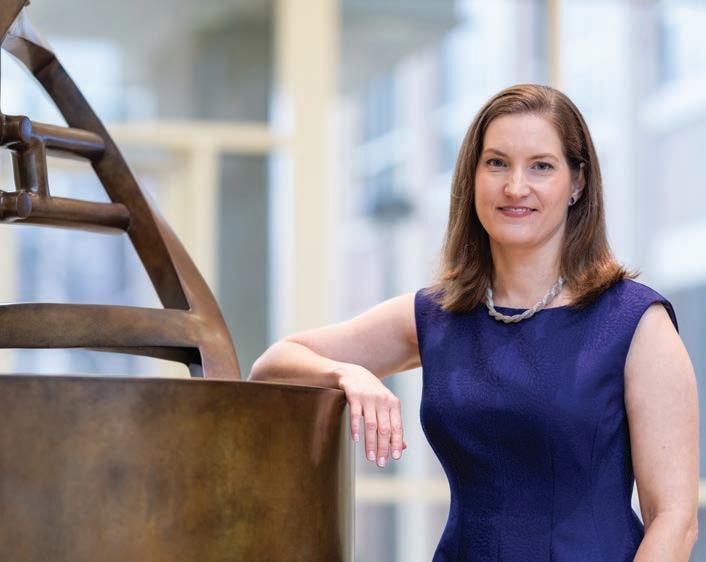
Dungan has looked at variations across one million genetic markers and found a completely different group of markers that predict death among women and men. In addition, when women seek medical help for heart disease, they are more likely to fall into a medium risk category, so they are deemed OK to return home and instructed to follow up with a cardiologist. However, one in five of these women actually dies within 30 days because the severity of their symptoms were not taken seriously or not articulated adequately, and their cardiac evaluation was not as definitive.
“Most people think we have the same heart and the same risk factors, like poor diet, that contribute to heart disease,” Dungan says. “But heart disease can look differently among women for different reasons, like biology, physiology and the experience of atypical symptoms. This finding is significant because every diagnostic
23
“My passion is trying to find an objective biomarker that is more predictive of women’s heart disease, so we do not have to rely on an individual’s report of their symptoms, which can be internalized and experienced differently.”
“Our researchers are immersed in a global world in which science can serve as the adhesive to not only solve specific problems, but to bring us all together as a population.”
— Dean Anna McDaniel
method we use right now is based on research conducted on white males.”
She adds that a new line of questions have opened up for her since identifying these genetic patterns among men and women.
“As exciting as this discovery is, as a scientist what keeps me awake at night is finding a way to help the millions of women out there with unrecognized symptoms, or those who struggle to get the cardiac care they need. Right now, I cannot go any further without answering two questions: Are these genes also a factor for women in racial minority groups? And do these genes play an important role during the postmenopausal phase, when many women are at higher risk for heart disease?”
In particular, Dungan is studying the genetic variations of postmenopausal and African American women, because those groups experience the most health disparities with heart disease.
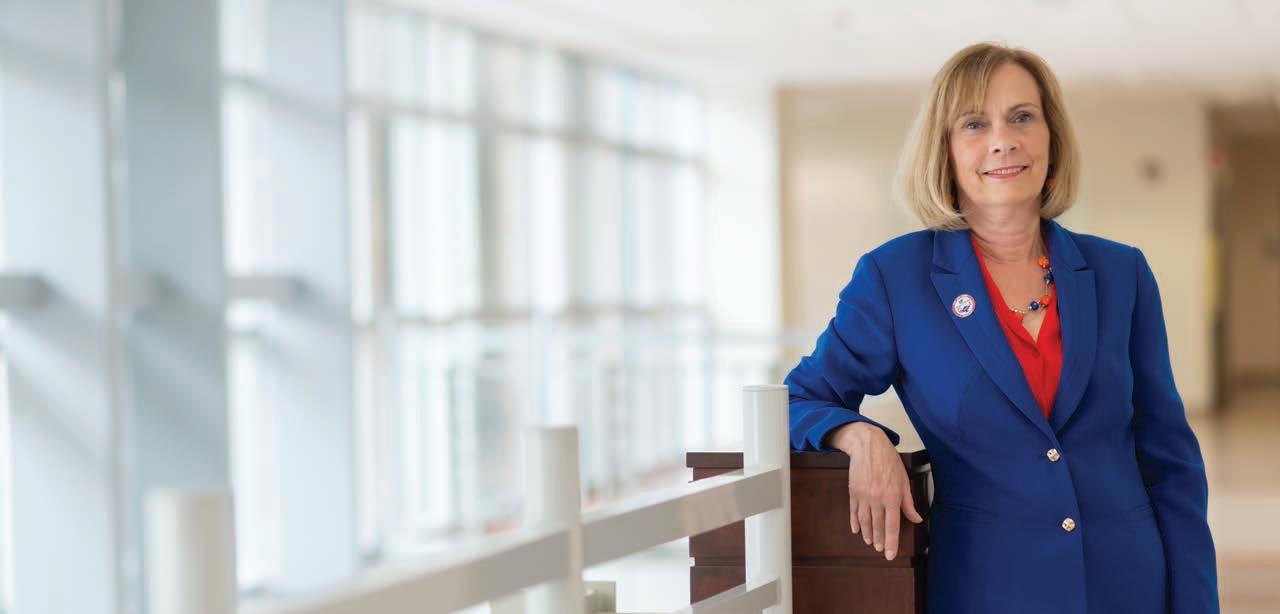
“My passion is trying to find an objective biomarker that is more predictive of women’s heart disease, so we
do not have to rely on an individual’s report of their symptoms, which can be internalized and experienced differently,” Dungan says. “If we were to have an objective, female-specific biomarker, we would stand a chance to reduce those one in five women who die within 30 days of their initial evaluation.”
McDaniel says diversity is one of the core values of the College of Nursing.
“Our researchers are immersed in a global world in which science can serve as the adhesive to not only solve specific problems, but to bring us all together as a population,” McDaniel says. “Genetic research across various ethnicities and subgroups, such as Dr. Dungan’s, is vital to our collective effort to advance health care for all.”
Overcoming Stigmas
Receiving a cancer diagnosis is hard enough, but even after treatment many women with breast cancer experience decreased quality of life, fatigue, depression and memory
loss, and they are often told these symptoms are all in their heads.
College of Nursing Associate Dean and Professor Debra Lyon has spent the last 20 years identifying objective measures that may illuminate new pathways for treating distressing symptoms in cancer survivors. As a psychiatric nurse, her interest in breast cancer research stems from the desire to understand the stigma breast cancer patients and survivors face when encountering these conditions.
“Breast cancer patients and survivors may be told that feeling tired and not feeling well is all in their head,” Lyon says. “As nurses, we are always trying to push through the stigma that these common distressing symptoms and conditions are not considered as physiologically based as other conditions. My aim is to discover physiological pathways that lead to developing new therapies to cure the disease and additional long-term consequences and side effects.”
Lyon’s research is concentrated on the “-omic” fields of biological sciences,
24 Spring/Summer 2020
“By building the pipeline of minority researchers and clinicians, we are increasing the multicultural understanding and outcomes of cancer in populations experiencing health disparities, and we are accomplishing it in a way that is culturally congruent.”
such as genomics, transcriptomics, proteomics or metabolomics.
Her current work focuses on -omic measures of blood markers and their association with outcomes. This includes the intersection of biology, symptom manifestations and quality of life, primarily for women with breast cancer.
Two recent studies published in the journals Epigenetics and the Journal of Neuroimmunology highlight the association of sophisticated blood markers with patient-oriented outcomes of depression, fatigue and cognitive dysfunction, including memory impairments. Lyon found that changes in cytokines proteins that signal communication among cells during chemotherapy contribute to symptoms of fatigue among breast cancer patients.
Lyon’s other focus is on expanding the pipeline of minority students who
will form the researchers and clinicians of the future and help eliminate health disparities in cancer. As the director of the Research Education Core at UF for a five-year, $16 million grant from the National Cancer Institute to establish the Florida-California Cancer Center Research, Education and Engagement (CaRE 2 ) Health Equity Center, Lyon works with other researchers from this multi-site project to support translational cancer research and training among minority populations.
“Individuals always prefer to see providers with shared cultural understanding,” Lyon says. “By building the pipeline of minority researchers and clinicians, we are increasing the multicultural understanding and outcomes of cancer in populations experiencing health disparities, and we are accomplishing it in a way that is culturally
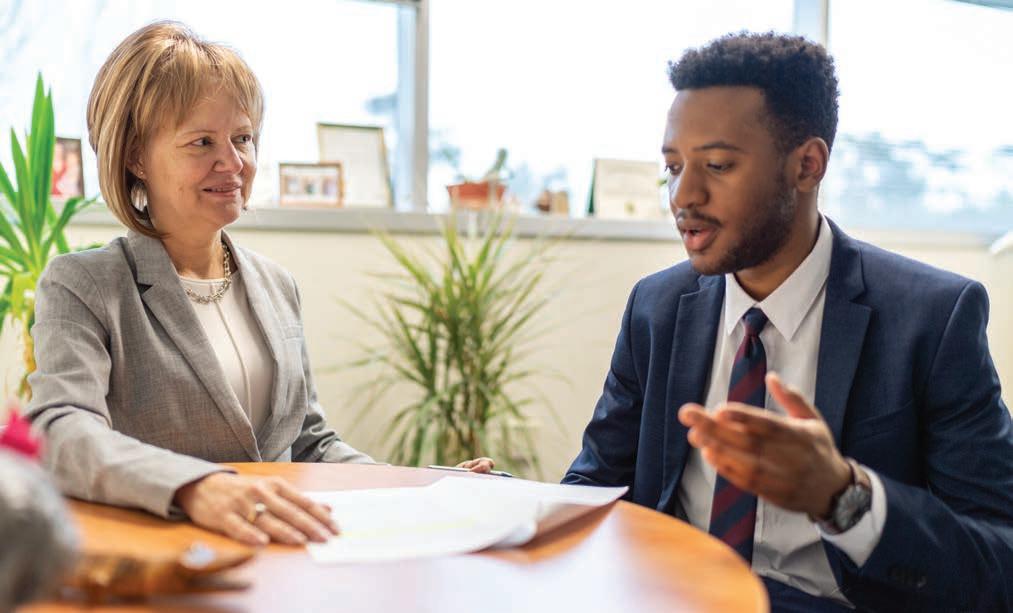 — Debra Lyon
— Debra Lyon
congruent. Personally, I love the science behind my research in cancer, but I find the opportunity to support and establish the next generation of researchers very rewarding, especially as it relates to expanding the diversity and experiences through minority researchers.”
Ragnhildur I. Bjarnadottir
Assistant Professor of Family, Community and Health Systems Science rib@ufl.edu
Jennifer R. Dungan
Associate Professor of Biobehavioral Nursing Science jrdungan@ufl.edu
Robert Lucero
Associate Professor of Family, Community and Health Systems Science rlucero@ufl.edu
Debra Lyon
Executive Associate Dean and Thomas M. and Irene B. Kirbo Endowed Chair delyon@ufl.edu
Related website: https://nursing.ufl.edu/research/
25
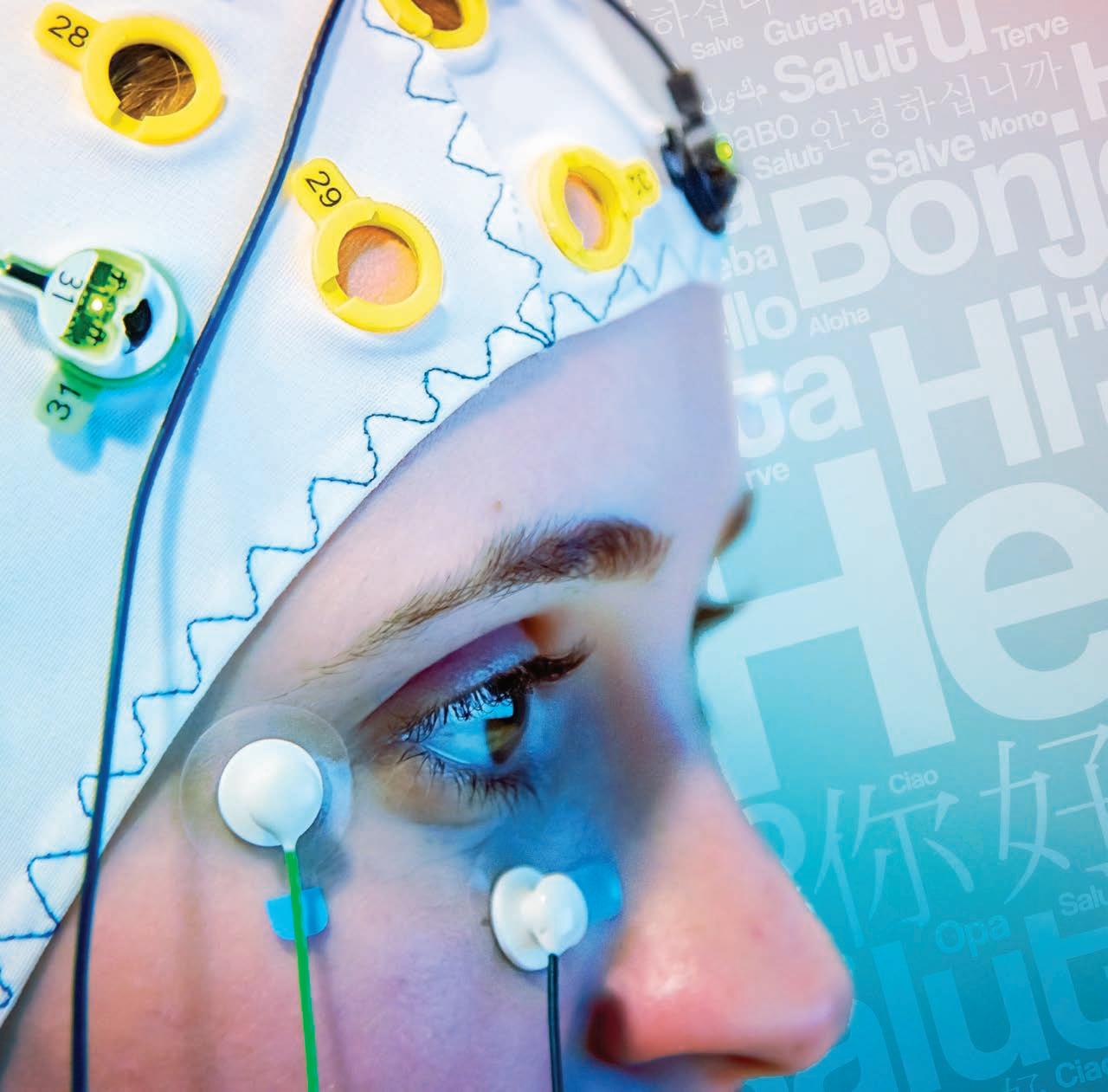
26 Spring/Summer 2020
John Jernigan
BILINGUAL BRAINS
Linguistics team studies the benefits of speaking multiple languages
 B y Jewel Midelis
B y Jewel Midelis
Growing up in the northern Italian town of Bolzano, near Italy’s border with German-speaking Austria, Eleonora Rossi regularly spoke Italian and German as a child. At 15, she began attending a high school specializing in foreign languages, adding English, French, Dutch and even some Latin to her repertoire.
She says she had so many languages being spoken to her that she came home one day holding her head and told her mother “my brain hurts.”
“In a couple of months, the professors would never speak any Italian to us. It was only the foreign languages,” Rossi says. “In the course of a school day, we maybe had two hours in French, two hours in English. It really did make my brain hurt.”
Today, Rossi, an assistant professor in the UF Department of Linguistics, understands that just as muscles hurt after an intense workout, her brain was exercising so many functions to process learning these four new languages that it became, well, sore.
“Nowadays, as a scientist in the field, I know exactly what was happening,” Rossi says. “There are massive activations your brain needs to do in order to pick up all that information and juggle the competition between all the languages.”
27
N europlasticity
While much of the brain’s development occurs in childhood and adolescence, Rossi says “it is clear that cognitive and neuro-flexibility really exist throughout the lifespan.”
Neuroplasticity or brain plasticity is how our brains adapt, change and respond to different environments.
Megan Nakamura, a UF doctoral candidate and 2019 National Science Foundation Graduate Research Fellow, describes the brain as a “ball of Play-Doh that’s always changing.”
Nakamura – who Rossi mentored as an undergraduate at California State Polytechnic University, Pomona – describes how every experience changes the brain and its plasticity. Language learning is a powerful one of those experiences.
“A lot of research shows prolonged bilingualism has a positive impact on the brain. There’s a few studies that indicate bilingual brains have an increase of gray matter, and more matter is more brain,” says Nakamura, a first-generation college student. “It keeps your brain healthier.”
In California, with funding from an NSF Partnership in Research and Education (PIRE) grant, Rossi and Nakamura collaborated with researchers at the University of Groningen in the Netherlands to compare how two different groups of native English speakers learned Dutch. Rossi worked with participants in California while Nakamura traveled more than 5,000 miles to the Netherlands.
For 10 days, participants came into the respective labs to learn Dutch for an hour using the Rosetta Stone language software. The only difference between the two groups –the English speakers in the Netherlands were in a Dutch environment.
While both groups learned Dutch during the training, Rossi says, the results showed that the subjects in the Netherlands, immersed in the Dutch language and culture, learned faster and better.
Now, they’ve brought their research to the Department of Linguistics at the University of Florida to investigate how short-term new language training can shape linguistic, cognitive and neural measures in younger and in older adults.
B l aB
Within the maze of offices in the basement of Turlington Hall, in the heart of UF’s campus, is the Brain, Language and Bilingualism lab, affectionately known as BLaB.
It’s where Rossi, lab co-director and linguistics Associate Professor Edith Kaan and Nakamura are seeking to understand how learning another language changes the brain and what benefits, if any, it bestows.
Since arriving at UF in 2003, Kaan has pioneered psycholinguistics research and paved the way for the work of colleagues like Rossi. She is known for her work on language processing in monolinguals and second-language learners by looking at their brain waves.
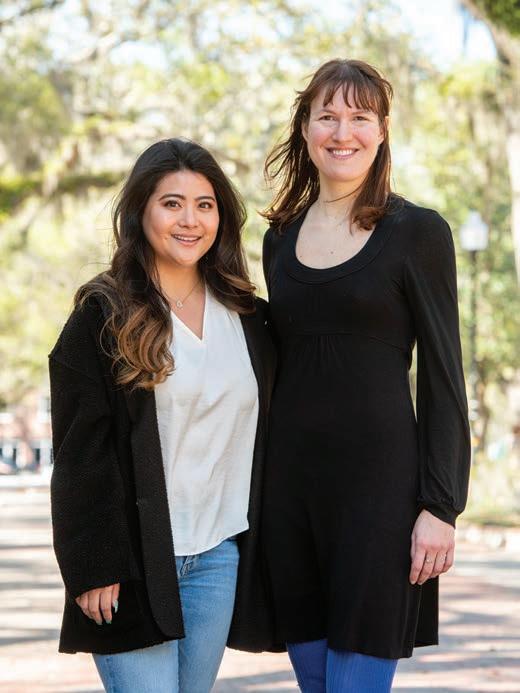
Kaan says Rossi’s arrival created an opportunity for the two of them to combine their strengths to create BLaB.
“We are one happy family,” Kaan says. “We inspire each other every day. We identify ourselves as being a center for bilingualism.”
Rossi says UF is poised to become a national leader in this field.
28 Spring/Summer 2020
“There’s a few studies that indicate bilingual brains have an increase of gray matter, and more matter is more brain. It keeps your brain healthier.”
Megan Nakamura
Megan Nakamura (left), a UF doctoral candidate, and Eleonora Rossi, assistant professor in the UF Department of Linguistics
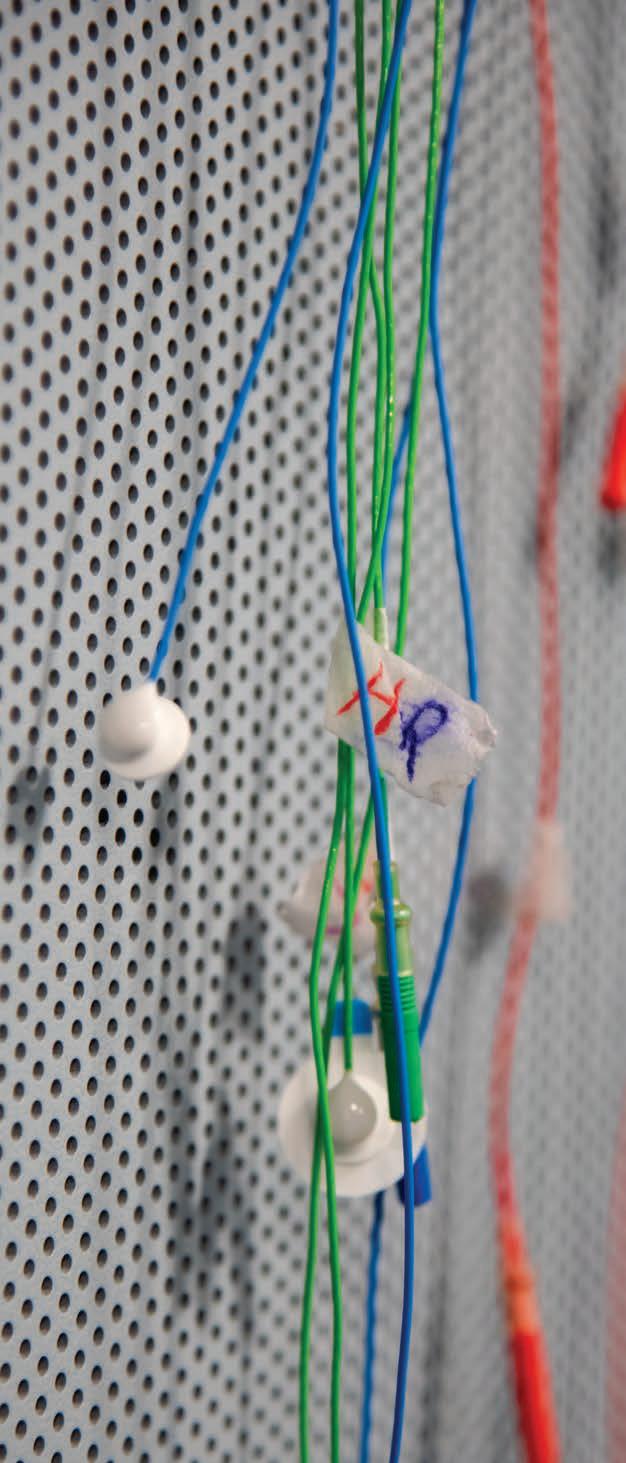
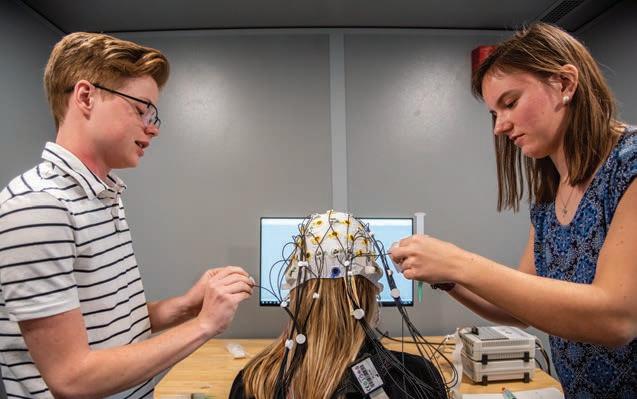

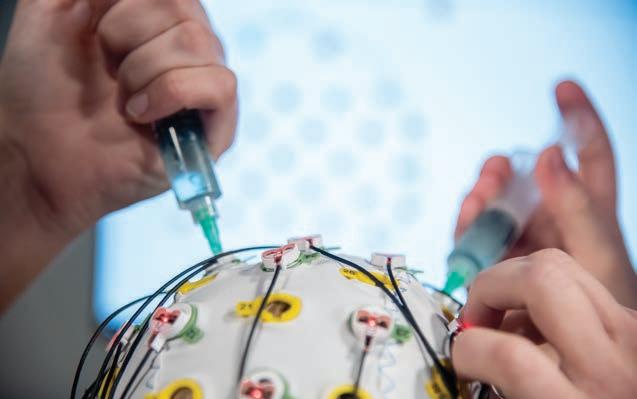
29
Megan Nakamura prepares participant Rayah Schwartz for a study session.
Undergraduate students Mel Mallard and Madelyn Kloske assist in capping study participant Rayah Schwartz.
Electrodes, which are non-invasive, allow the researchers to monitor subjects’ brain waves.
“It seems to be one of these moments where there could be a big explosion of bilingualism research at UF,” she says.
As part of her recruitment to UF, Rossi received funds to build BLaB, knowing she needed a specially outfitted lab to further her research. The lab is a soundproof room that looks more like a bank vault than a research facility. Inside are a chair and a desk and a computer monitor.
On the wall hang electroencephalography (EEG) caps, or what Rossi calls “funny swimming caps,” that are equipped with several dozen electrodes that allow the researchers to monitor subjects’ brain waves. Electrodes around the eyes ensure participants’ blinks or muscular twitches are also accounted for in the data.
Work in BLaB often extends beyond the Department of Linguistics, Kaan says. For example, Jorge Valdés Kroff, an assistant professor of Spanish and Portuguese studies, frequently works on projects with Rossi and Kaan. Three scholars from abroad have visited BLaB since it opened in mid 2019, and in January UF joined Cal Poly and Penn State University as a site for the NSF PIRE grant.
“I’m very proud of the cross-disciplinary environment and multiculturalism of our lab, partly because I am an international scholar,” Rossi admits. “I really believe in the value of embracing cultural diversity in our lab.”
Kaan believes BLaB’s culture provides an opportunity to attract Latinx and other minority students to the field.
“Bilingualism is part of Latinx students’ identity,” Kaan says. “It has been a major boost to draw minority students to conduct research as well.”
Several times a week, test subjects come to the lab, where they are fitted with the EEG caps and sealed in the lab, where they do a number of tasks to measure different aspects of language processing and learning. As the brain waves move up and down on the monitors, Rossi watches in real time how these waves change in response to language stimuli and how quickly brains adapt to things like learning a new language.
While the participants may be unaware they’re retaining a language after only two weeks, the brain data tell Rossi otherwise.
“Our research shows our brains are much faster at encoding the information than what we think,” Rossi says. “Our brains really outpace us. We should believe in our brains more.”
G reat d eBate
In the field of neurolinguistics, there is a continuing debate about whether people who speak more than one language have a “bilingual advantage” over monolingual speakers.
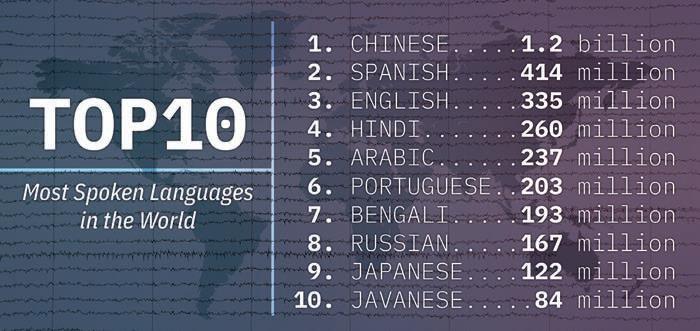
Rossi says that while the scientific literature is generally in agreement that bilingualism contributes to neural plasticity, or creates changes in brain matter across the lifespan, the debate lies in whether this results in behavioral changes.
Behavioral measures, such as changes in working memory or attention skills, are difficult to track, and they are measured differently across labs, Rossi says. Some labs find changes in cognitive functions in bilinguals; others do not. These different results have sparked a debate about how to appropriately measure cognitive functions and the accuracy of the results.
For Nakamura, bilingual doesn’t necessarily mean better.
“The idea of this lab is to never draw lines between monolingual or bilingual,” Nakamura says. “The idea is to show here’s what and how the brain changes if you are not bilingual or you want to become bilingual.”
Nakamura is currently recruiting participants for a three-year project to investigate bilingualism in both young adults and the elderly. By studying the brain waves of young and older monolinguals and bilinguals, she aims to understand how the brain responds to learning a third, new language for those who have lived life being bilingual versus those who have not.
30 Spring/Summer 2020
“Our research shows our brains are much faster at encoding the information than what we think. Our brains really outpace us. We should believe in our brains more.”
Ethnologue
Eleonora Rossi
“There’s only a handful of people doing this and asking these questions,” Nakamura says. “This NSF Graduate Research Fellowship makes it possible for me to dedicate all my time to be in this lab.”
B iliNGual world
As Japanese natives living in Hawaii before World War II, Nakamura’s grandparents and great-grandparents spoke both Japanese and English. But after the attack on Pearl Harbor, her great-grandparents stopped speaking Japanese and told their children to speak only English.
Nakamura, whose Mexican mother raised her to speak Spanish, wishes her grandparents, who now only remember a few phrases in Japanese, hadn’t lost their native language.
“The war took away a big chunk of people who could have been JapaneseEnglish bilinguals,” she says. “It took that away for me. You don’t really
realize how much bilingualism has an impact on societal culture until you sit down and think about it.”
Today, she hopes her work will enable the world to embrace culture differences and destigmatize the idea that bilingualism is foreign.
“No language precedes another,” Nakamura says. “The work we do in this lab can easily be translated into this broader aspect that people shouldn’t fear bilingualism.”
According to the U.S. Census Bureau, only 20 percent of Americans can converse in two or more languages, compared with 56 percent of Europeans, and some experts estimate about half of the human race speaks at least two languages.
Because of her personal experience and her research, Rossi is a strong advocate for language education.
At the American Association for the Advancement of Science meeting in February, Rossi presented a talk about
how societies can benefit from embracing bilingualism. She firmly believes bilingualism contributes to a society’s health, education, culture and economics, and she’s gathering data to back that assertion.
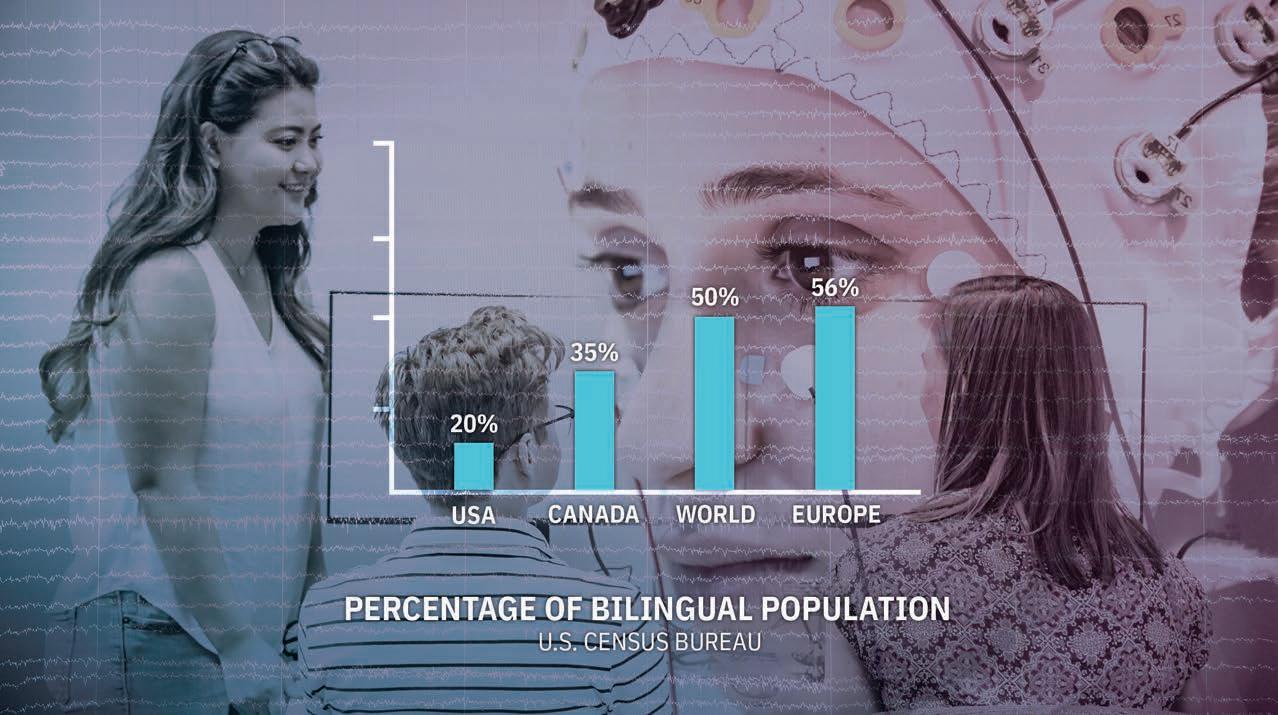
“Bilingualism can open a door to communication with neighbors, further job opportunities and aid in healthy aging,” says Rossi, who would also like to see language education promoted in K-12 schools. “What is the negative value of teaching Spanish to our English kids? There is no bad value.”
Eleonora Rossi Assistant Professor of Linguistics eleonora.rossi@ufl.edu
Edith Kaan Associate Professor of Linguistics kaan@ufl.edu
Related website: https://blab.lin.ufl.edu/
31
Wild Side
c s
Understanding the impacts of wildlife

32 Spring/Summer 2020 E c onomi
John Jernigan
B y C indy SpenCe
Illustrations by K. Kinsley-Momberger

33
aleb Stair was visiting his family’s farm in Pennsylvania one weekend when something happened that would change the direction of his academic career.
His brothers were driving home when they hit a deer with their car. His brothers were fine (the deer, alas, was not), but the accident prompted a lively family dinner table conversation.
“We were all wondering why that deer was over there,” says Stair, a new faculty member in the University of Florida’s Food and Resource Economics Department.
His grandfather suggested it was because hunters had scared the deer onto the road, and Stair, who was knee-deep in econometrics research at the time, had an idea. As part of his natural resource economics studies he had worked on climate issues and agricultural subsidies, so why not apply the same data analysis approaches to wildlife.
“I knew the data existed for me to do this sort of thing,” Stair said, “but I had never heard of it being done before.”
Stair designed a study to determine the effects of different hunting methods on deer-vehicle collisions. He decided to compare the effects of hunting with guns vs. hunting with bows to see which method was more effective at reducing deer-related vehicle accidents. His hypothesis was that bows, which are quiet, would not scare the deer, and that guns, which are loud, would. Wrong.
“The average bow hunter is not Robin Hood,” Stair says. “Bow hunters moving around in the woods, scaring the deer, cause the deer to move more, and the more they move, the more likely they are to cross a roadway.”
Gun hunters, however, effectively harvest more deer, therefore reducing the number of deer crossing the road.
His mentor was enthusiastic about the study and asked him if he had any other ideas involving animals.
And a wildlife economist was born.
Data, Policy and Animals
In 2015, when Stair attended the Southern Regional Science Association Conference, he presented his research on the deer-related auto accidents and found he was the only economist discussing wildlife. Each year since, however, there have been more and more researchers presenting work related to wildlife and economics, an encouraging sign, Stair says, for the young field.
“I don’t want to be the only wildlife economist,” Stair says. “I’d like to drum up interest in prospective students and colleagues from other disciplines.”
Stair says he hopes wildlife economics can better inform policy makers about their decisions. For example, if a forest manager wants to increase the number of bow hunters in an area, what are the ramifications of that decision? Wildlife economists can provide statistics, costs, benefits and merge that knowledge with the knowledge of wildlife biologists who have a better understanding of animal behavior.
34 Spring/Summer 2020
C
Bow-hunting Gun-hunting
The effects of different hunting methods on deer-vehicle collisions in Pennsylvania.
• Bow hunters moving around in the woods, scaring the deer, cause the deer to move more, and the more they move, the more likely they are to cross a roadway.
• Gun hunters, however, effectively harvest more deer, therefore reducing the number of deer crossing the road.
Stair came to UF in 2019 as part of a hiring spree that brought to campus more than 600 new faculty, many of them early career academics like him. Students in his lectures, he says, are intrigued by applying economic principles to wildlife management and some have offered to help with research.
And now that he is in Florida, he welcomes the help. While he is accustomed to interactions with wildlife from his childhood on the Pennsylvania farm, wildlife in Florida takes some getting used to. One of his first stops was the St. Augustine Alligator Farm since he had never seen an alligator before. And not long after moving in to his McCarty Hall office, he saw an alligator in the pond next to the building.
“I was definitely the only person on the sidewalk who walked past and stopped,” Stair says. “To the students, it was just an alligator, whatever.”
To Stair, it was another research idea.
“What are the overall economic contributions of the American alligator to the state of Florida?” Stair asks. “How much money do alligators actually bring in to the state?”
A lot of factors go into that analysis: alligator farms, alligator hunting, alligator tourism, alligators on campus.
“I mean, the mascot for this university is an alligator,” Stair says.
How do you attach a value to a mascot?
“Good question. We’re still trying to figure that one out.”
“Jaws” Effect
Since “Jaws” is his favorite movie, it’s no surprise that Stair turned to sharks with an eye toward economic analysis.
“There’s a scene in ‘Jaws’ where the mayor says, ‘We can’t tell everybody about the shark attacks because it would drive away all our business,’” Stair says. “That’s a perfect test for me, to see if shark attacks actually do drive away business.”
Using daily hotel occupancy data, Stair aimed to find out how the public responded to shark attacks following a
before, signed up for an eight-day field school experience tagging sharks off the coast of Miami “just like they do on Shark Week.”
“As academics, especially on the economics side of things, we need to get out of our offices more,” Stair says. “It brings us closer to our research t he sharks but also to the people who are collecting the primary data.”
Stair also has tapped in to the treasure trove of data in UF’s International Shark Attack File, housed in the Florida Museum of Natural History. Next up,
Economic factors of alligators in Florida
string of eight in a short time around the Outer Banks. He found that immediately after the shark attacks there was no noticeable change. There was, however, a delayed impact from a month to a year later. He said it is possible that people already at the beach are not in a position to change their plans. People with time to regroup, however, likely do react to shark attacks by changing their plans.
That work sparked a curiosity about sharks and further research. Stair, who had never been out on the ocean
he plans to examine the effect of shark attacks on Airbnb stays in Florida. Some variables he wants to consider include the effect on Floridians vs. non-Floridians.
“A shark attack might not change your perspective if you’ve grown up in Florida or lived here a long time,” Stair says. “But it might if you’re visiting from Iowa.”
Another comparison is between the impacts of shark attacks versus the impacts of red tide, or hurricanes.
Stair also used his
study with
35
deer
In 2018, there were 21 active alligator farms in FL which produced 39,916 hides and 208,717 lbs of meat. Total value is $12,229,174.
Florida harvest periods are from August through October yearly. No guns are allowed in alligator hunting.
In 2016, the Statewide Nuisance Alligator Program received 12,759 nuisance alligator complaints, resulting in removal of 8,050 alligators. Orlando topped the list with 235.
Source: Miami Herald, 2017.
Source: Florida Fish and Wildlife Conservation Commission.
Alligator Farms
Alligator Hunting Nuisance Alligators
bears, substituting black bears in West Virginia for the deer. In West Virginia, property damage from black bears is common, so Stair examined whether hunting method bow or gun correlated with property damage claims. He found that an increase in archery hunters was associated with an increase in bear damage claims, whereas an increase in gun hunters was associated with a decrease in claims. The effect was even more pronounced with bears than with deer.
“A bear is essentially nature’s biological tank, with these massive shoulder blades,” Stair says. “You have to hit a very, very particular spot to eliminate a bear quickly with a bow.”
Economic Analysis of Shark Attacks in Outer Banks, NC


Bears and other migratory animals, such as the Florida panther, are a challenge for econometric research, Stair says. While there is plenty of economic data to mine, most of that data is confined to defined areas, like counties. A bear or panther, however, is oblivious to whether it has moved from Alachua County into a neighboring county. Economists rely on data, bear damage claims for instance, to measure the effects of movements of mobile species, rather than radio tags, collars or GPS.
Receptive Audience
Stair says one of his first stops after moving into his office was the
Department of Wildlife Ecology and Conservation, and he was struck by how receptive they were to talking about his work.
“Everyone is totally willing to sit down with me and have a conversation. The collegiality at the University of Florida ... I don’t have to really search to find somebody who thinks my research is worth their time.”
Within his department, too, he feels welcome. Professors looking to engage students in natural resource economics will mention his work with sharks when they try to demonstrate that economics is an interesting field.
“Maybe it’s the effect of Animal Planet or National Geographic or

36 Spring/Summer 2020
“A shark attack might not change your perspective if you’ve grown up in Florida or lived here a long time. But it might if you’re visiting from Iowa.”
— Caleb Stair
Using daily hotel occupancy data, Stair aimed to find out how the public responded to shark attacks following a string of eight in a short time around the Outer Banks of North Carolina. He found that immediately after the shark attacks there was no noticeable change. There was, however, a delayed impact from a month to a year later.
Hotel Occupancy and Shark Attacks — Coastal Carolina Counties (2005-2016)
Shark Attacks
Shark Week,” Stair says. “I guess I’m a fun one.”
As the nation’s third most populous state, but also a state with national forests and parks like the Everglades, humans and wildlife cross paths in Florida, creating a disconnect between biological carrying capacity and cultural carrying capacity in an area.
It’s a topic Stair says is particularly relevant in human-wildlife clashes, such as panthers killing cattle or alligators attacking people. Biological carrying capacity is the ability of an area to support a species with enough food, water and space to roam for the species to thrive. Cultural carrying capacity is how many of that animal a lligators
or panthers, for instance humans are willing to tolerate in an area. Comparing the two would require devising an effective means of measuring them, and then taking those measurements both before and after a negative interaction, like an alligator attack.
“Does an attack decrease tolerance and how long does that decrease in tolerance last over time? How long until we’re back to ‘OK, there are alligators in the pond?’” Stair asks.
It’s on the list of future projects.
“In Florida, I am in the hotbed state for wildlife economics,” Stair says.
“If I’m doing shark attack-related research, the University of Florida runs the International Shark Attack
Florida Shark Attack Data
File, so I have ready access to the data. Florida has the largest reptile in the United States and a large population of those animals now. Burmese pythons in the Everglades. And the manatee population.”
Stair says the wealth of potential topics available in Florida could keep him busy for years to come.
“I could retire at the University of Florida,” Stair says, “and there would still be dozens of topics that I hadn’t even touched.”
Caleb Stair Lecturer, Economic Impact Analysis Program cstair@ufl.edu
37
Florida Shark Attacks by Month (1926-Present)
Florida Shark Attacks by Time of Day (1926-Present)
1994 1995 1996 1997 1998 1999 Shark Attacks Surf Rescues (100s) 0 20 30 40 50 60 70 10 90 80 100 110 120 130 150 140 Beach Attendance (Millions) 0 20 40 60 80 100 120 Number of Attacks 5 14 41 62 49 61 73 84 103 72 44 11 JAN FEBMARAPR MAY JUNJUL AUG SEPOCT NOV DEC 0 10 20 30 40 50 60 70 80 5 7 21 23 25 59 50 51 70 41 52 11 3 35 39 Number of Attacks 6AM7AM8AM9AM10AM11AM12PM1PM2PM3PM4PM5PM6PM7PM8PM
Florida Beach Attendance, Surf Rescues and Shark Attacks (1994-2000)
University Press of Florida celebrates 75 years of publishing
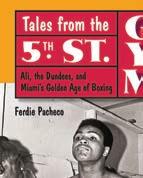




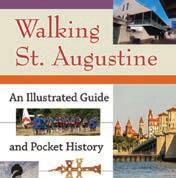
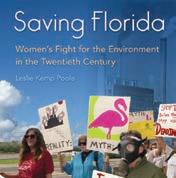




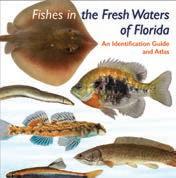


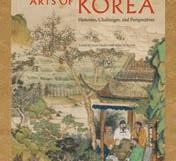



Archaeologist Jerald Milanich has seen a lot of changes in the book business over the course of nearly 50 years writing and editing more than 70 books published by University Press of Florida (UPF).

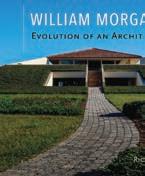
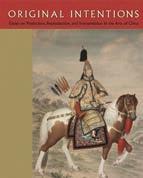

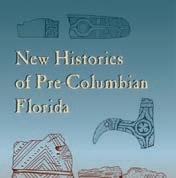

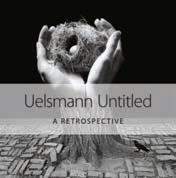
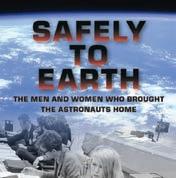






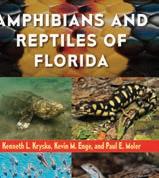

“I had a front-row seat to the many changes University Press went through over the years,” says Milanich, a curator emeritus at the Florida Museum of Natural History whose UPF books include Florida's Indians from Ancient Times to the Present and Hidden Seminoles: Julian Dimock's Historic Florida Photographs. “Perhaps the most fun was participating in the evolution of the book production process from blue-pencilwielding copy editors and indices compiled on index cards to word processors and an array of software that has streamlined book editing and design.”


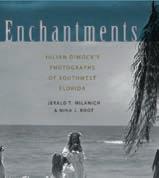

Milanich is one of hundreds of authors who have had their scholarship published through UPF since its founding 75 years ago as the University of Florida Press. Today, it is one of the largest university presses in the Southeast, with more than 2,500 titles in its catalog.

“We’ve come a long way since our first book,” says UPF Director Romi Gutierrez as she points to a commemorative reissue of the press’ first book, Florida Under Five Flags, among an array of books spread across a large conference table in the press’ new home on UF’s East Campus.

38 Spring/Summer 2020
B y Joseph K ays
Other titles on display include Ditch of Dreams: The Cross Florida Barge Canal and the Struggle for Florida's Future by Steven Noll, master lecturer in history and David Tegeder, professor of history at Santa Fe College; Paradise Lost? The Environmental History of Florida co-edited by history Professor Jack Davis; Uelsmann Untitled: A Retrospective by photography Professor Emeritus Jerry Uelsmann; and Fort Mose: Colonial America's Black Fortress of Freedom by Florida Museum archaeology Curators Kathleen Deagan and Darcie MacMahon.
“Perhaps the most fun was participating in the evolution of the book production process from blue-pencil-wielding copy editors and indices compiled on index cards to word processors and an array of software that has streamlined book editing and design.”
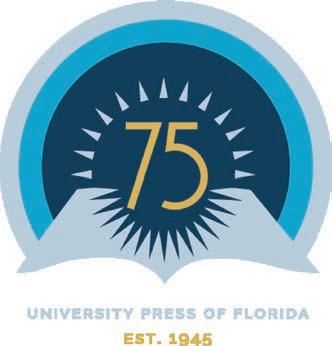
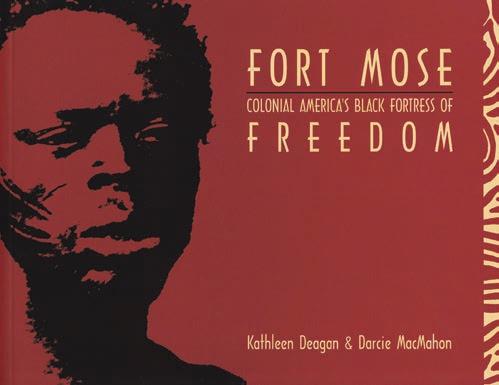
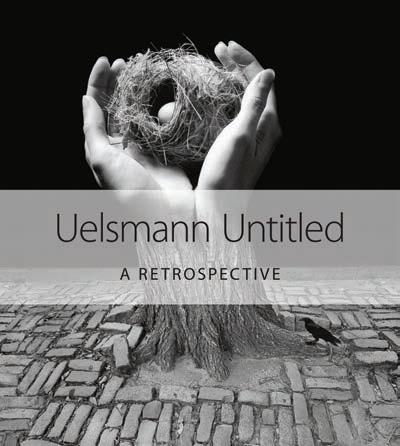 Jerald Milanich
Jerald Milanich

39
1945
First book published: Florida Under Five Flags


1947
1989
“The editors understood that we wanted to publish a book that could be used in college classrooms but also would be read by the public. The fact that Ditch of Dreams is still in print almost 10 years later speaks to the wonderful job UPF did in working with us.”
Steven Noll
years later speaks to the wonderful job UPF did in working with us.”


As Florida’s oldest book publisher, UPF has evolved over the years from just serving the University of Florida to representing all 12 State University System of Florida institutions today.
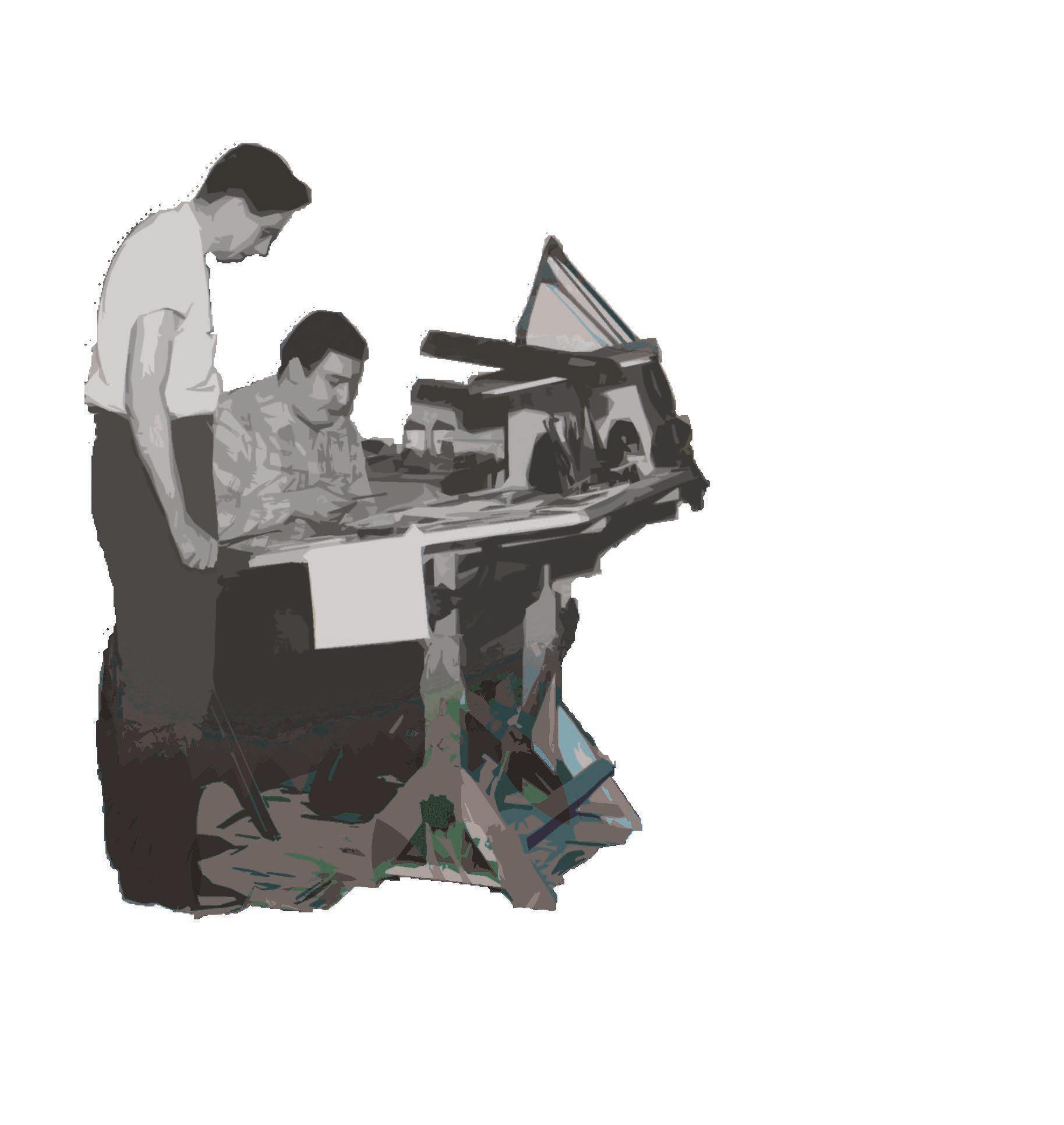
40 Spring/Summer 2020
First publication of the press' all time bestselling title, Classical Ballet Technique, by Gretchen Ward Warren of USF
Founded with a slightly different name (University of Florida Press)
FSU forms first agreement with UF CPU UF Central Publishing Unit as the press was known back then

CPU moves into the offices at 15 NW 15th St. where it would remain for 50 years
University Presses of Florida, a decentralized, system-wide consortium established by the state Board of Regents
“As Florida added more public universities, the need for a centralized university press became apparent,” says Gutierrez.
From the thousands of proposals the press receives each year, an editorial committee with representatives from 11 SUS institutions approves about 100 projects for publication.
“They go through an internal vetting process, then a peer-review process,” she says, “and only when the project makes it through those hurdles does the board review the project.”
Gutierrez echoes Milanich’s memories of the technological revolution in the book publishing business.
Publication of Florida's first complete history, The History of Florida, edited by Michael Gannon
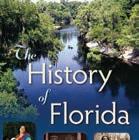
“UPF has undergone a total conversion to electronic editing and production,” she says, adding that the process from proposal through editing, graphic design, marketing and sales is handled by a staff of 31. “The press ranks in the top third of Association of University Presses (AUP) presses for sales and new title production.”
Books from the press have received many awards from AUP and other academic organizations. Some have been named to Amazon’s bestseller list and chosen for book clubs. Both academic and general interest books have received accolades such as starred reviews in Publishers Weekly and
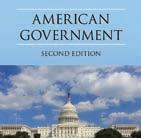
UPF hosts the Southern University Presses meeting in Jacksonville University Press of Florida celebrates 75 years

a featured essay in the New York Times Book Review and mentions in the New York Review of Books, the Times Literary Supplement, the Village Voice and The Nation
Books are distributed to retailers, as well as sold through the press website http://upress.ufl.edu
41
1963 1965 1973 2009 1991 1995 2007 2015 2020
Orange Grove Textbooks created
The consortium became University Press of Florida, a single press for the Florida State University System
Journals Program is started by Lauren Phillips
Political Black Girl Magic — Black female mayors are used to handling crises
By Sharon Austin, Professor of Political Science
Mayors are elected to govern their cities, serve and protect citizens, maintain law and order and bring about economic prosperity. Those are tall orders today, as American cities are wracked by COVID-19 and anti-racism protests.
One effect of these simultaneous crises has been to thrust Black female mayors onto the national stage. That’s because, for the first time in U.S. history, Black women lead several of the United States’ largest cities, including Chicago, Atlanta and San Francisco.
Black women make up just 14% of women in the United States, and their mayoral history is a short one. But it’s a history of achievement worth exploring. My upcoming book, an edited volume called “Political Black Girl Magic: The Elections and Governance of Black Female Mayors,” examines the background of 24 Black women elected to lead cities over 50,000 since 2000 to learn who these pioneering women are and how they came to power.
HERstory
In 1971, Ellen Walker Craig-Jones of Urbancrest, Ohio, a town of 754, became the country’s first Black female elected mayor. She was followed, in 1973, by Lelia Foley a poor, divorced, single mother who became mayor of the predominantly Black small town of Taft, Oklahoma. Later that same year Doris A. Davis of California became the first Black female mayor of a big city: Compton, population about 78,000.
In the decades that followed, just a handful more cities a mong them Hartford, Little Rock, Minneapolis, and Washington, D.C. e lected Black women mayors.
Then came 2017, when five African American women held that office simultaneously in Atlanta, Baton Rouge, Baltimore, Toledo and Washington, D.C. Huffington Post dubbed it the “Year of the Black Woman Mayor.” Among those elected were Vi Lyles in Charlotte and Keisha Lance Bottoms in Atlanta, both still in charge today.
In 2019, Chicago’s Lori Lightfoot, a former prosecutor, defeated another Black woman in the Democratic primary to become the city’s first Black a nd first openly gay female mayor.
Seven of the nation’s largest cities now have Black female mayors. These women are part of a national wave of winning Black politicians: Twenty-two Black women serve in Congress and 313 in state legislatures. These victories are huge milestones for women historically excluded from leadership positions in both traditional politics and civil rights organizations and who, in many cases, lacked even Black community support when running for office.
How she got there
The Black female mayors covered in my book range in age from their 30s to their 70s and represent cities both large and small. They have many things in common.
All but one are Democrats Acquanetta Warren of Fontana, California, is the lone Republican and all are very well educated. Twenty-two of the 24 have a doctorate, medical degree, law degree or master’s degree.
Most also worked in a traditional “feeder” occupation for political service like law, business, education or community activism before pursuing politics. All had held another political office before running for mayor, with most serving on the local city council or in the state legislature.
Fifteen of the 24 are members of a historically Black female sorority, primarily Delta Sigma Theta, but also Alpha Kappa Alpha and Zeta Phi Beta. These three sororities prepare Black women for politics with their emphasis on public service– other famous members include Sen. Kamala Harris, singer Aretha Franklin, and authors Toni Morrison and Zora Neale Hurston.
Some Black female American mayors won close elections and others won by large margins, but regardless of margin most won open seats, either because the sitting mayor was term limited or chose not to run for reelection. That removed the added challenge of competing against an incumbent. Only seven of the 24 mayors defeated incumbents.
42 Spring/Summer 2020
Where she leads
Most Black women govern Southern cities that have a Democratic majority, though the regional exceptions Tacoma, Pontiac and Rochester a re notable. And unlike many of the country’s first Black male mayors, who were primarily elected in poor cities, Black female mayors lead a socioeconomically and demographically diverse array of communities, including superwealthy enclaves like San Francisco.
That means they had to attract votes from all kinds of people to win. Perhaps as a result, my research finds, Black women mayors don’t necessarily discuss race as often as America’s first Black male mayors did, campaigning instead on economic development. That’s been a winning stance for Mayor Acquanetta Warren, under whose financial stewardship, Fontana has thrived economically.
Nonetheless, the women I studied in researching my book say they’ve faced both racism and sexism in their political careers and that racism is a more complex problem. In a recent interview, San Francisco Mayor London Breed said, “The things that African Americans have endured in this country for far too long are things that I sadly have had to endure throughout my entire life.”
Atlanta Mayor Keisha Lance Bottoms was called the n-word in an anonymous text message after defying Georgia Gov. Brian Kemp’s early reopening plan during the pandemic.
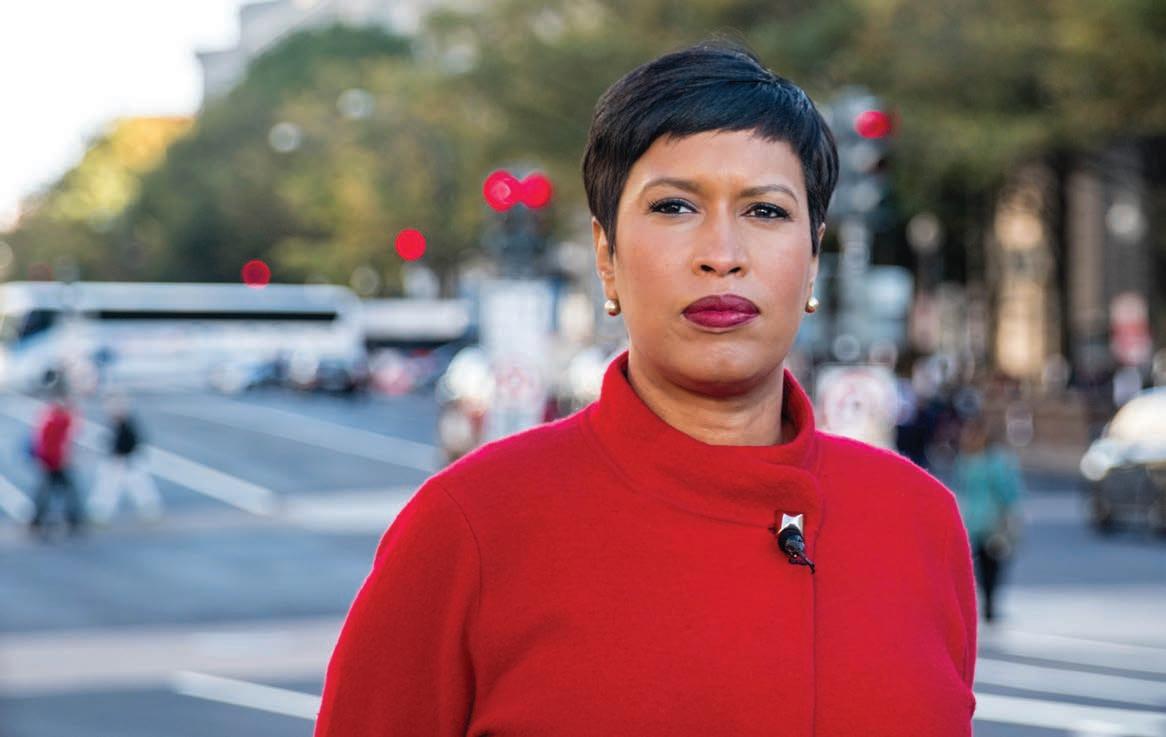
In so many of the cities these women lead from Atlanta and Ferguson to Washington, D.C. and Chicago Black residents have struggled to achieve political and economic power despite their large population. And, as demonstrated over and over again, they have strained relations with law enforcement.
Add a pandemic to the poverty and police violence that has long plagued African American communities, and today’s Black female mayors are facing crises with little historic precedent.
Some argue that they may fare better because of their identity and personal experiences. Persistent problems with police brutality and corruption in Baltimore, which has had three Black female mayors, shows that putting women in charge doesn’t magically fix entrenched problems.
But what my research can confirm is that Black women in American politics are used to uphill battles.
To read more articles by UF faculty, visit https://theconversation.com/institutions/university-of-florida-1392
43
Mayor Murial Bowser, Washington, D.C.
Explore Magazine
Box 115500
Gainesville, FL 32611-5500
Hive Help
WildfloWer Windfall
Hidden for decades among the 400,000 plant specimens in the University of Florida Herbarium were over 320 paintings of Florida wildflowers donated to the university in 1942 by artist Minna Fernald. Museum botanist Mark Whitten, who passed away in April 2019, rediscovered the paintings several years ago while rummaging in an old drawer in the herbarium.

“If you go out looking for these plants nowadays, you can find them, but they’re only in little isolated preserves,” said Whitten, a biological scientist at the herbarium. “My impression is what Minna Fernald saw was a much more wild and interesting Florida than what it is now.”
Fernald began painting the flowers she observed around her after she and her husband, chair of the department of entomology at the University of Massachusetts, retired to Winter Park. According to her obituary, Fernald was an accomplished artist who won many awards in Florida art competitions.
The most impressive thing about Fernald’s paintings is that the plants she chose to depict are nearly all immediately identifiable, said Lucas Majure, assistant curator of the herbarium, which is part of the Florida Museum of Natural History.
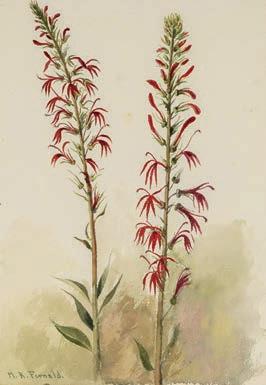
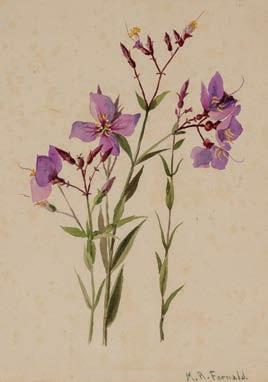

“Not only are they of artistic value, but I would say they’re of scientific value,” he said. “They’re really nice paintings, but at the same time, they’re very realistic.”
Halle Marchese
Non-Profit Organization U.S. Postage PAID Gainesville, FL Permit No. 94



 Joseph Kays Editor
Joseph Kays Editor








 Brad Buck
Brad Buck



























 — Debra Lyon
— Debra Lyon

 B y Jewel Midelis
B y Jewel Midelis










































 Jerald Milanich
Jerald Milanich














